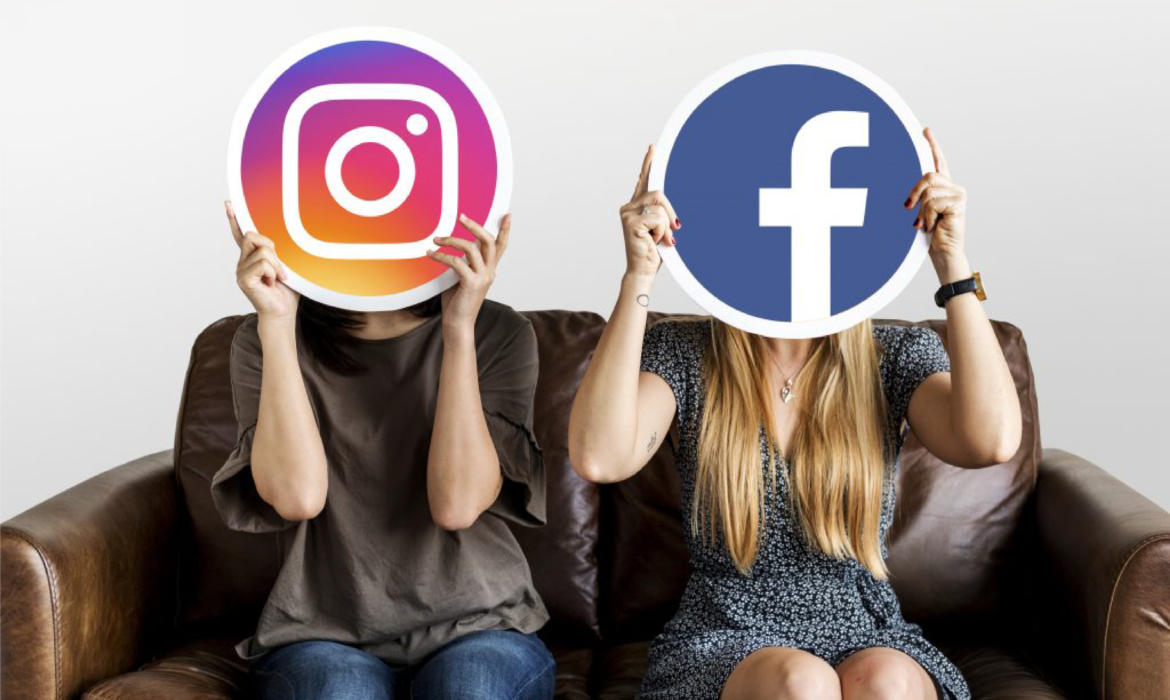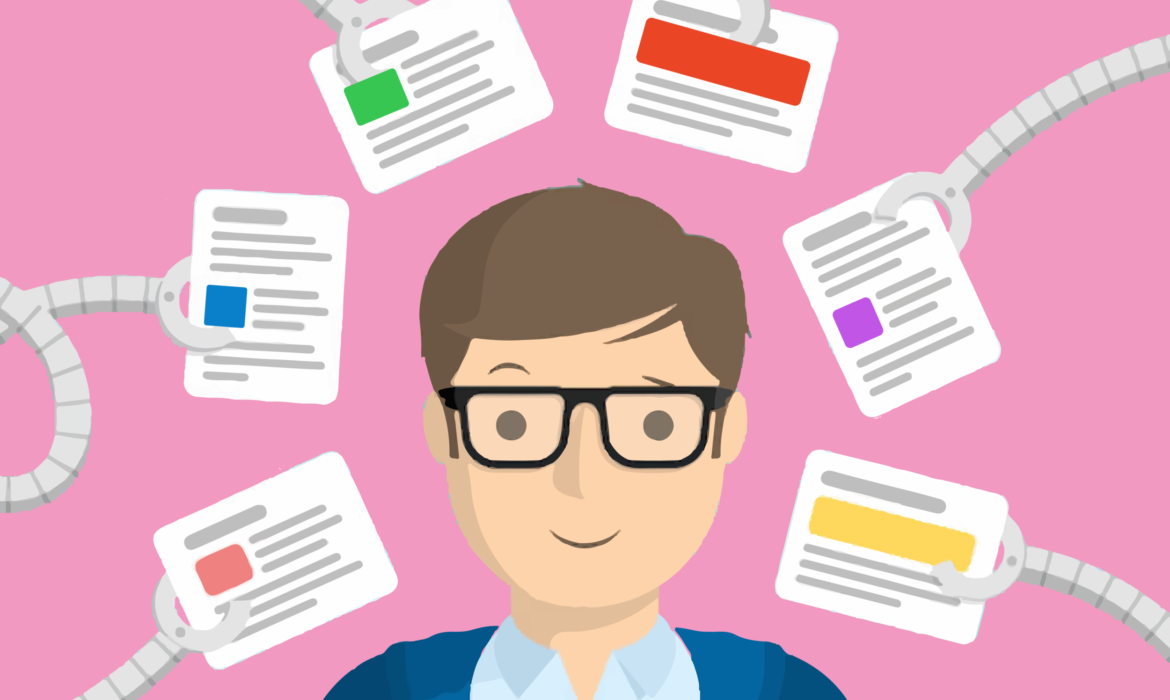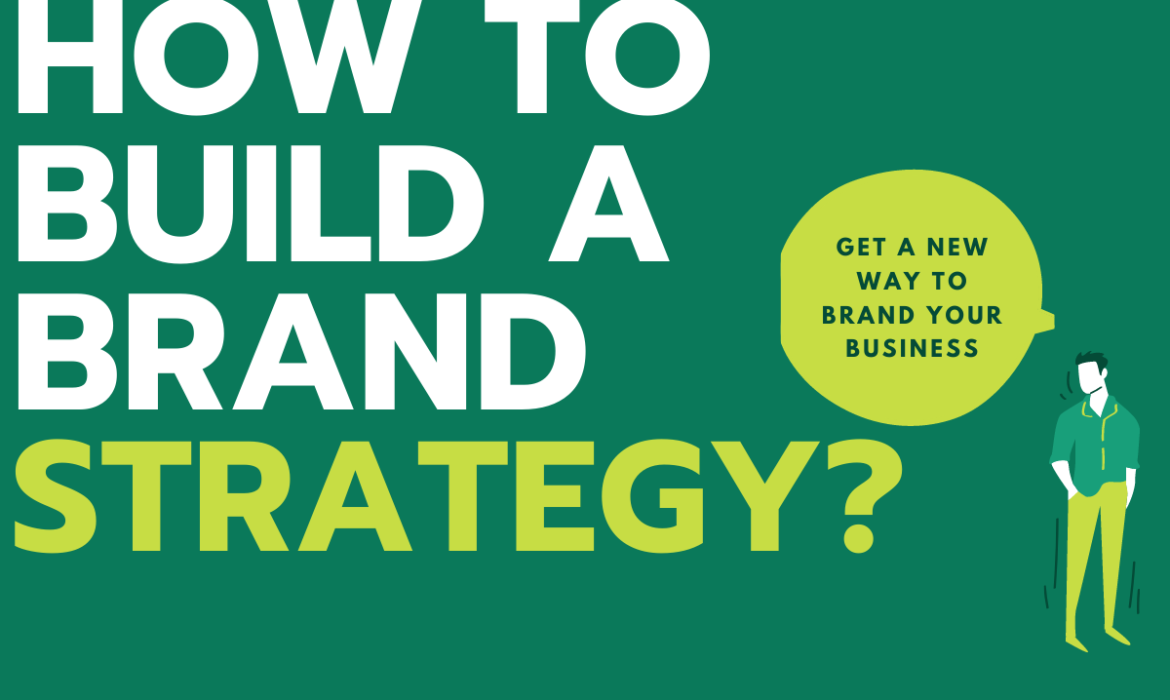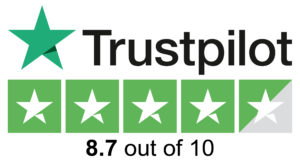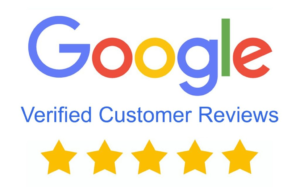7 Amazing Ways to Win Buyer Psychology
If you want to know how to sell more, then you better know why customers buy

Is there anyone in the room who, yet, doesn’t want to expand its business in these challenging times? To reach success in business, every marketer should know the basic ingredients of a buyer’s psychology.
Are you interested in the choices customers make while purchasing products? Did the media pop-ups inspire you by evoking shopper’s need for the products? If so, then you must be learning the art of consumer psychology.
To this purpose, it is imperative for businesses to wheeze around their buyers, their choice of products, attitude, desires, or persona.
That’s where LaGrasigns come for the rescue of their readers, to strive for wise plans in understanding customer behavior and psyche.
Buyer Psychology Insight
Consumer psychology is a field of study rested on many disciplines, like behavioral economics, social psychology, marketing, and other fields to retain consumers.

The precise concept aims to evaluate and understand the choices of the buyers. Psychological factors of the customers such as attributes, lifestyles, personality, and behavioral shifting all carried immense value for the marketers to construct a marketing game plan.
Psychology of Buyers in the Usual Affair
Business owners and marketers should hold a great understanding of the psychological factors which affect consumer behavior when they’re online. As per the former trend, psychology’s day job in consumer culture may be hard to predict, even for the seasoned player in the field.
But, now things have been transposing with the study of ethnography and consumer neuroscience. They are turning it easy to understand how consumers make choices and the intention-action gap i.e. the contrast between what customers like and what they actually buy.

To alter your thinking, we’d like to point that social influence, customized marketing, brand status, and even customer’s consciousness of the price all play a vital role to grip buyer attitude and price variation.
Besides, it is quite beneficial to craft a healthy relationship with your audience for your brand. Nothing to shy away from the physical factors of brand management such as the product or service, its looks, price, and packaging, etc.
The intangible factors also consist of a vital spot in consumer psychology, such as brand experiences and fondness they have with the product or services. These all behavioral variables can combine to build a brand power and marketing strategy.
Psychological Tactics for the Marketers
Marketers don’t look like psychologists neither they think of themselves. But they always try to insert a psychological theme in marketing to indulge customers. Here are some cool tactics which you should use to compel customers to buy.
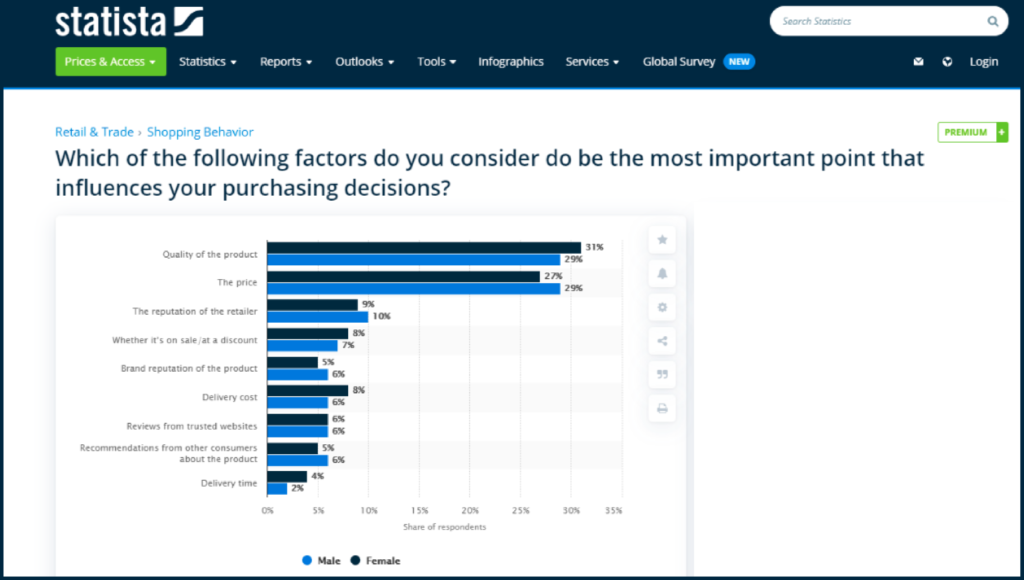
Tactic #1: Target the Impulsive Reactions
The neocortex section of the human brain is responsible for the impulsive purchasing of the customer; we should be targeting that.
According to creditcards.com survey:
84% of customers have carried impulse purchases
54% spent 100$ or more on impulse purchases
15% spent approx 100$ on impulse purchases
ADD-ON TIP: Use the word “NOW” in your sales post as it can drive maximum impulse purchasing.
Tactic #2: Apply Foot-in-the-Door Tactic
By meeting the small request of your customers, open the doors of big opportunities for your brand.
ADD-ON TIP: Try to retain buyers through email sign-ups and free trials.
Tactic #3: Use Powerful Visuals
- A human brain is attracted to visual images faster than text.
- As per the study, social media images drive 650% higher engagement than text posts.
ADD-ON TIP: Attract the audience by using creative visual images inside your posts.
Tactic #4: Psychology of Color & Human Behavior
Quite surprising but 60% to 90% of impulsive purchases are based on colors.
ADD-ON TIP: Blend your designs with the most consumed colors
Tactic #5: Promote Exclusivity
- Motivate your consumers’ self-esteem by evoking their fantasies.
- Use slogans like “We’re not for everyone”, make them feel special and excited.
ADD-ON TIP: Greet them with a free membership, cheap start-ups, or exclusive deals
7 Amazing Ways To Win Buyer Psychology
If you think you are a raw champion in addressing the customers’ choices, you might have taken Hollywood films dreadfully. Since many psychological facts are adjacent to buyer’s choices, we must look forward to fraternize these in our sales.
1. The Magic of Words
You can behold the chances of buyer’s gaze through best copywriting. LaGrasigns certainly has the best copywriter team to share a glimpse of your sales endeavor.
You might think, can a tiny twist to words in sales banners can make any difference? Yes, it does and results in a surplus of dollars, also fruitful for your staff management statistics.
Who’s on this planet which doesn’t like appreciation? Of course, every one of us! But obviously, this blog is earmarked to the buyers, so use the words which excite them. For instance, the content marketing institute roll in that great content can charm the buyers three times more than paid advertising.
Isn’t what you might be chasing for? So, play your best stroke of words to engage your potential audiences.
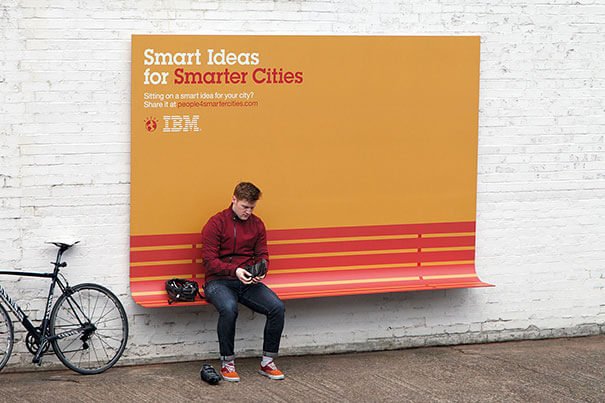
2. Win Buyers with Rewards
When you indulge psychological concepts into your sales efforts, that’s where you shift the momentum into your favor. Don’t underestimate the power of rewarding your buyers as this would be your best move to retain them.
Discounts, offers, promotions, or hello deals run best, but the rewards are super-duper joy you can share with your buyers while offering them to buy.
As per Cialdini’s laws of persuasion; people enjoyed flip love in return when something amuses them. You can use it to pull success into your business and create a rich pool of satisfied customers.
If you post a log of earned reviews of loyal customers, a rare hit of 270% will be shown to your business. Don’t forget, if your customers are using a loudmouth to market your services it will surely expand your range.
As in the case of “Uber”, they usually offer referral codes or coupons to the customers to get discounts or paybacks. This is an ideal way to score big at shoppers and build a staunch customer base.

3. Genre of Buyers
Neuroscientists believe that the human pattern of spending is a mimic of pain means “spending till it starts hurting”. To spread your brand magic, it's recommended to know the genres of buyers and design your strategy respectively.
There are three classes of buyers—average spenders, spendthrifts, and frugalists. Average spenders always prefer to lean onto their most favored brand—they are confident of what they buy.
Spendthrifts are the ones who spend recklessly until they reach their “buying pain”. Yet the frugalists are separate from the above two. They try to remain mild on spending before they hit their “buying pain” slot. Just so you’re aware, 24% of shoppers out there are frugalists.
Since, they are the tougher ones to bring down, with the firm strike of strategies, it becomes easy to win them.
You can line them up with many tricks like— offering discounts, free trials, bundle packages, and more. Your business needs support from an expert salesperson that shapes your conversion rates easily.
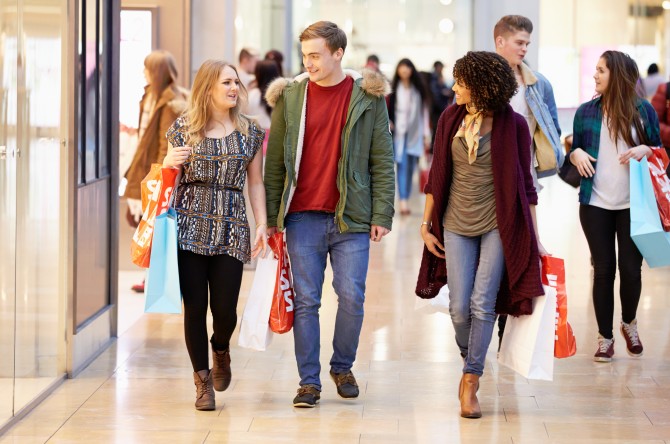
4. Creating a Halo Effect
As we all know, the first impression will be a make or break many times for someone’s character. But if we’re discussing buyer psychology, then the term” Halo Effect” tugs great importance.
If your brand logo has a color of red with a combination of orange on it or a location of some down street Manglahar, witch valley road, then your impression will be sabotage for sure.
If you want to grow as a brand, offer an excellent user experience from the first glance. This effort leads to a strong chain with your customers also builds a loyal customer base in the market. But be mindful of any errors will narrow your chances of becoming a priority of the buyers.

5. Feed Buyers With Learning
This feature should be added to your to-do list to retain the buyers for shopping. One impressive study revealed that learning causes changes in your hippocampus.
As physiology says, exposure to new things is good for your brain. According to CCSU Business & Development, learning a new skill improves the density of your myelin and helps your mind to grow stronger than ever.
So, if you teach, tell, guide, give insights, or suggest a new idea to your buyers, this involves their minds. Once you have caught their buying emotions, they’ll re-evaluate your brand before turning their eyes to other kinds.
Be smart and educate your buyer on the value of the product, not the price. Guide them with deep care about how to use your product, how to upgrade or downgrade, and affect their choices in the buying patterns.

6. Real-Time Personalization
Personalization can even be flavored like a “hygiene factor”: if a business gets it wrong, customers may rush onto the opposite shop.
Big bosses such as Tesla let customers design their inventory of cars. Fashion stalwarts like Fame and Partners or Gucci allow buyers to customize their bags, wears, and more. “Nike by You” lets you design your solo customized shoes. Etsy has the power to let buyers customized their vitamin pills, the best trait we all love.
However, not all customers want similar stuff. The ability to customize or personalize their experience or service inevitably boosts customer satisfaction.
It will be a treat to watch when your buyer tastes delight over their engraved initials in the mailbox or their most loved product in the best packings. This causes your brand a force of most worthy and loyal customers upfront.
Let’s do it if you’ll face a chance of customization into the products. There are plenty of ideas to customize your efforts in the product or services, even if your business doesn’t have a physical face.
Be artistic in your best interest, and look for ways that can boost the brand exposure for each of your buyers or clients.
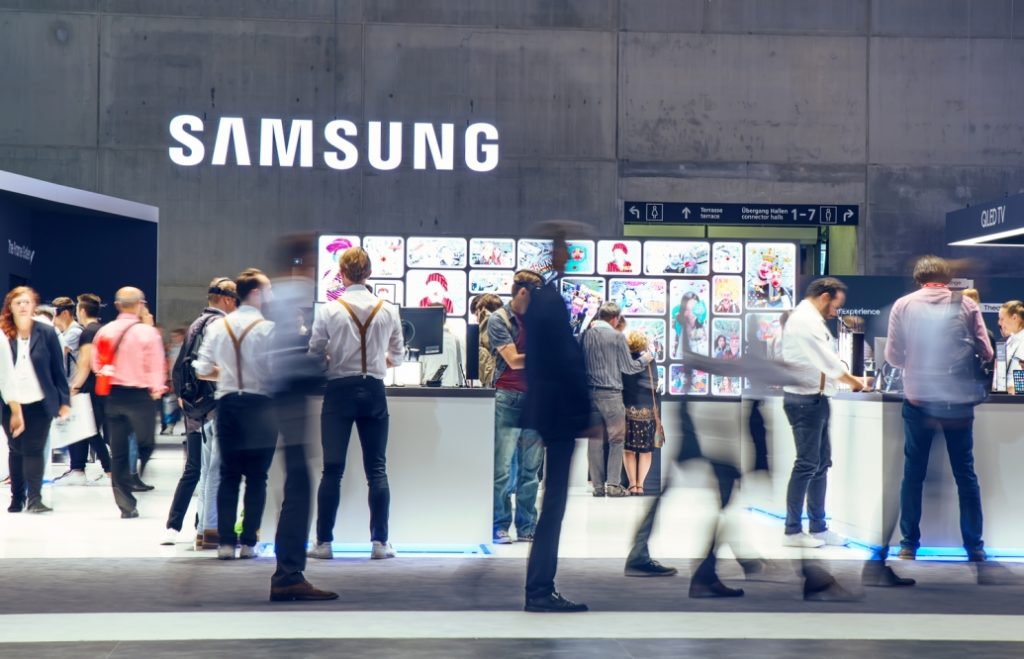
7. Social Proof Psychology
As we all heard, humans are social animals who cannot live apart. You may feel like you’re a noble creature, but the fact is it’s tough to go against the instinct and ignore what others around you are doing. Stepping with others is a good way to keep moving.
Bang with the social proofs to mobilize the human psychology in marketing. Social media has served as a torchbearer as we can view a whole set of routines of the users worldwide. Marketers can use this flux of users for their marketing cause.
One mild instance of social proof in action is when “influencers” hit artificial impact to bump their followers count. This blind shot may not only impress the brands but also deceive them to advertise with fake influencers.
Naturally, if you see a top banana with millions of followers, you’re more likely to follow him too, despite the quality of the content posted.
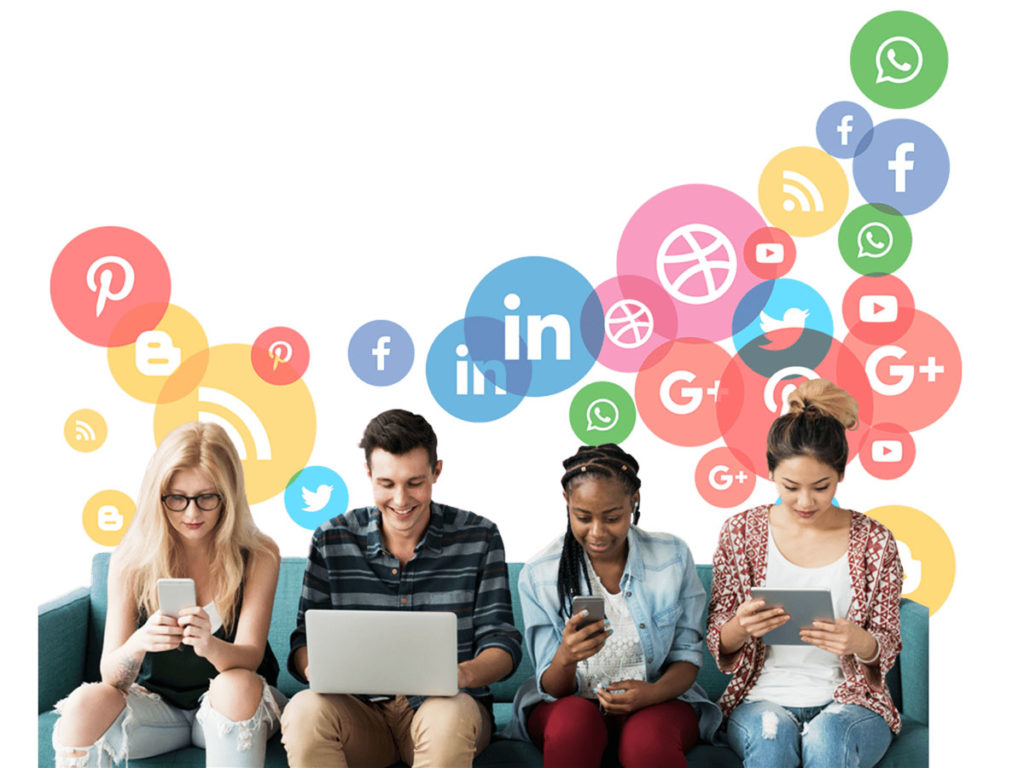
Besides, the question still lingers, how can we use social proof in our marketing plans? Create bespoke content and show the number of likes and shares on your articles.
Promote user-delight content, reviews, and testimonials. Use influencer marketing, but make sure to only open windows for those who speak your brand’s real spirit.
Psychology Matters
Customer or Buyer psychology can be a spearhead for a marketing plan, or sometimes for a business as a whole. Being able to engage buyers and speak to their needs has an impact on sales, marketing, product, even your managerial duties.
Psychology is a kind of art and to eject its cure you must start to speak your buyers’ language. Give respect to the voice of your buyers, chance to speak– knowing that by using “positive language”, you create positive spirits.
In the end, we hope that we have shown the best ways of how to win your buyers’ psychology.
Don’t forget to share this post!
Facebook or Instagram? Who Will Be Your Business Manager?
Welcome to our added featured blog of the season 2021. Before we share about “What is the best choice for your business, Facebook or Instagram?” let us take you first to the blogging section of our webpage.

Read some of the hottest trends of the market in recent years like Artificial Intelligence, SEO, Digital Marketing Trends, AI apps, and many more at https://lagrasigns.com/blog/
One heck of a question stays in every sales person’s mind while making a business strategy that should my business be on Facebook or Instagram?
Without a doubt, any social media site can be a game-changer for you if you land with a precise and witty business strategy.
There are herculean opportunities to connect and engage an audience, boost brand awareness, and push traffic to your site. But they’re also for offbeat purposes.
Of course, the same question still lingers on — where does your business will stand out? To explain the distinctiveness and usage of each platform, we’re going to serve you with more fresh content than shared in the past.
Feed your mental greed and keep the ball rolling to find the best business manager for social media influence.
Facebook vs Instagram-The Big Business
In the events of social media marketing, Facebook continues to be the Mikado on canvas. Until Jan 2021, Facebook has raced to 2.85 billion users, making it the social hub for users worldwide. In the backlog of recent times, Facebook has changed social media customs through unprecedented business fortunes.
Facebook Relative Statistics
- 2.85 billion monthly live users
- 65 million small companies have Facebook Pages
- 90% of Facebook users are Generation X
- 40% of consumers prefer to watch videos on Facebook
- 74% of marketers value Facebook for their branding of services
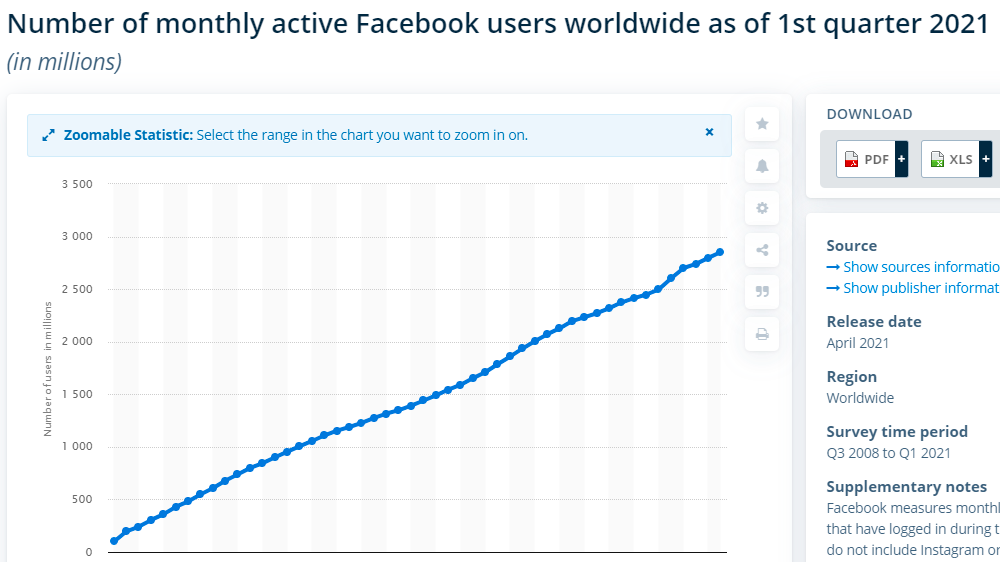
Then there’s a newbie emerging to find its footholds, Instagram. Founded in 2010, the rookie has enjoyed the overwhelming response of global users. As of Jan-2021, Instagram has been acquired by 1 billion monthly active users, which turns the site into a booming social network on the planet.
Instagram Relative Statistics
- 1 billion monthly live users
- 500 million daily Instagram Stories worldwide
- 37% of US state users are on Instagram
- 67% of Instagram users are Millennials
- 65% of marketers like to target Instagram for branding
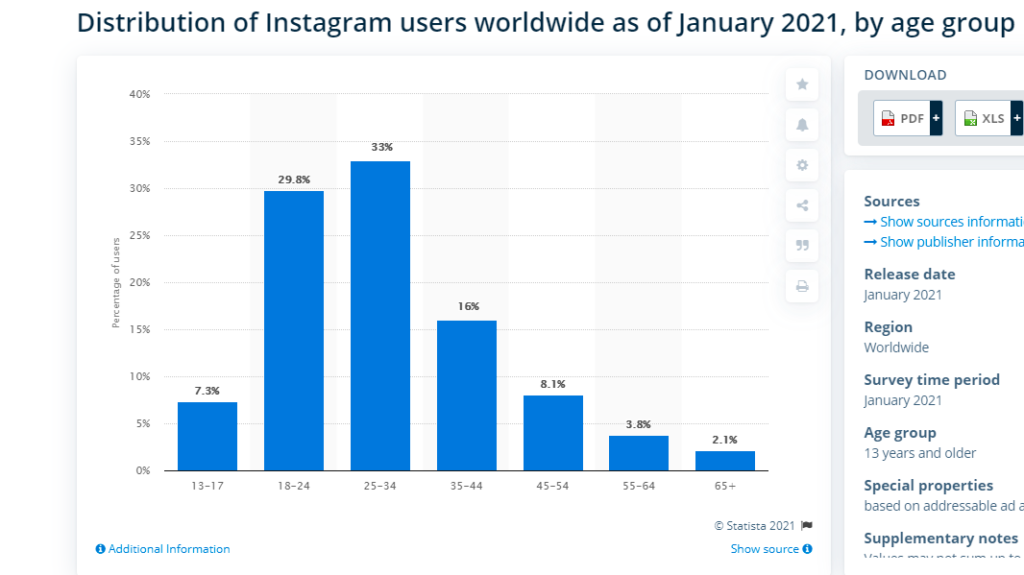
Although Facebook has been able to impress the global audience with its reach, whereas Instagram also doesn’t put a foot wrong.
These vital figures have not only besieged the public but let small businesses show their presence with Facebook Page.
We’re pretty sure you’re enjoying this social media buzz and looking forward to learning more. Now compare two of the whacking social spots in terms of their purpose.
Instagram or Facebook?-Visibility Factor
As far as we have spent time on Facebook for humorous posts or inspiring content, Facebook does have the comfort of higher visibility. It not only has a larger user base but also captivated most age groups.
Let’s dig into a few aspects to run a business on Facebook:
1. Facebook Business Pages
Facebook Business Page will allow you to define the online presence of your brand with leverage. These pages will help you to:
- Give constant updates to the customers and interested users
- Interact with your customer, boost engagement, & get feedback
- Allow people to connect with products and services straight away
- Set yourself as an authority within your niche
- Offer discount, giveaways, or kickbacks to the customers
- Build a community of loyal users of your brand
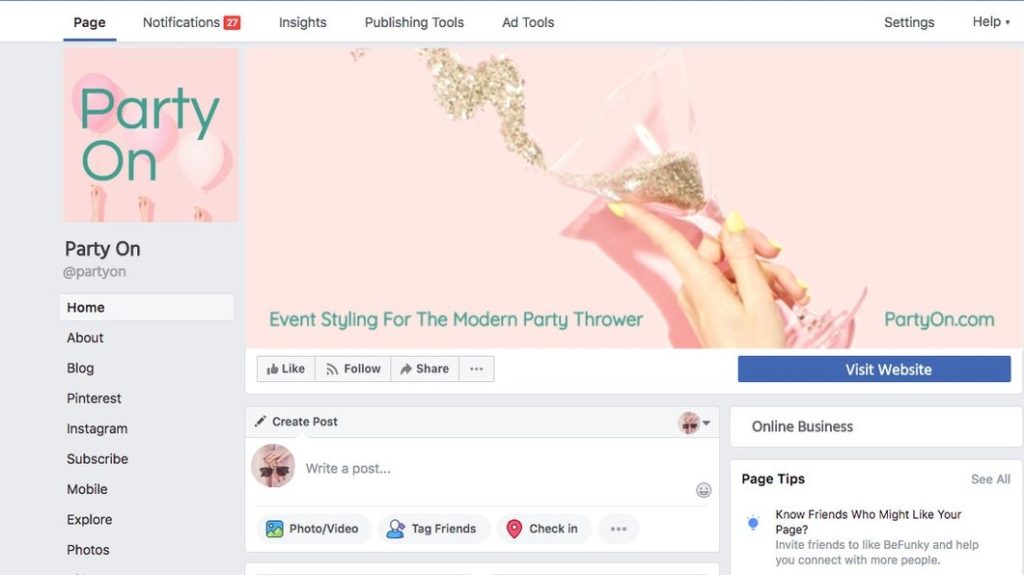
2. Facebook Groups
Facebook groups are rich to hold a community of like-minded people attached to your brand.
Groups can serve you with:
- Advertise your brand to a higher potential audience at once
- Enable the group members to seek goods from each-other
- Get honest feedback from your brand users
- Distribute brand awareness across the group
- Get to know about the views of a diverse class of people
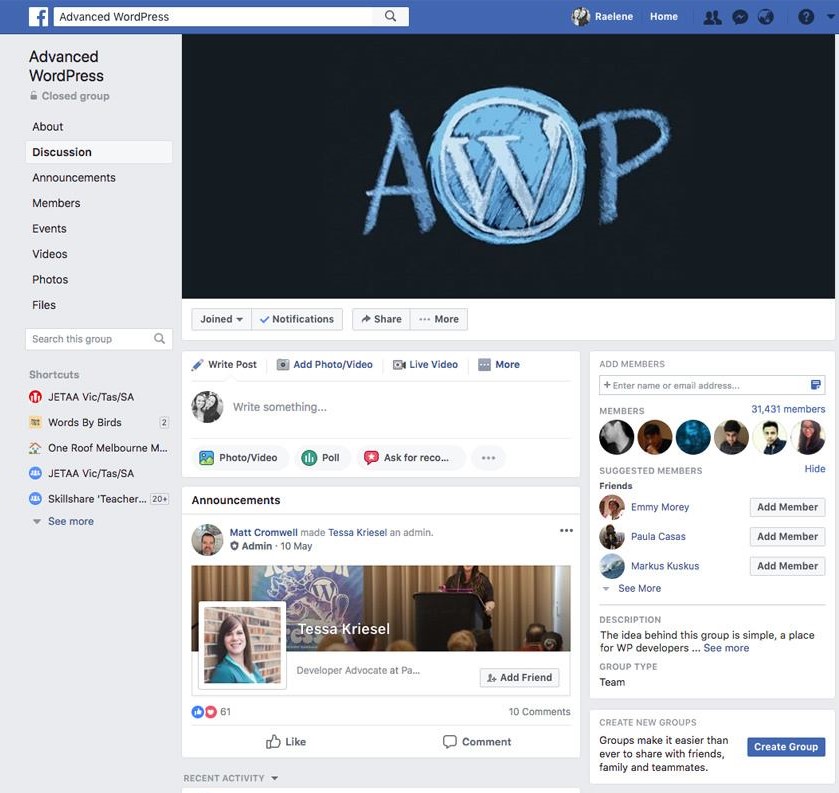
3. Facebook Live
Facebook Live allows teams to engage with their audience in real-time.
The live option tips you:
- Alteration of content in live videos to display on pages and groups
- Showcase your brand culture by sharing behind-the-scene videos
- Allow users to socialize with your brand via Q&A panels and more
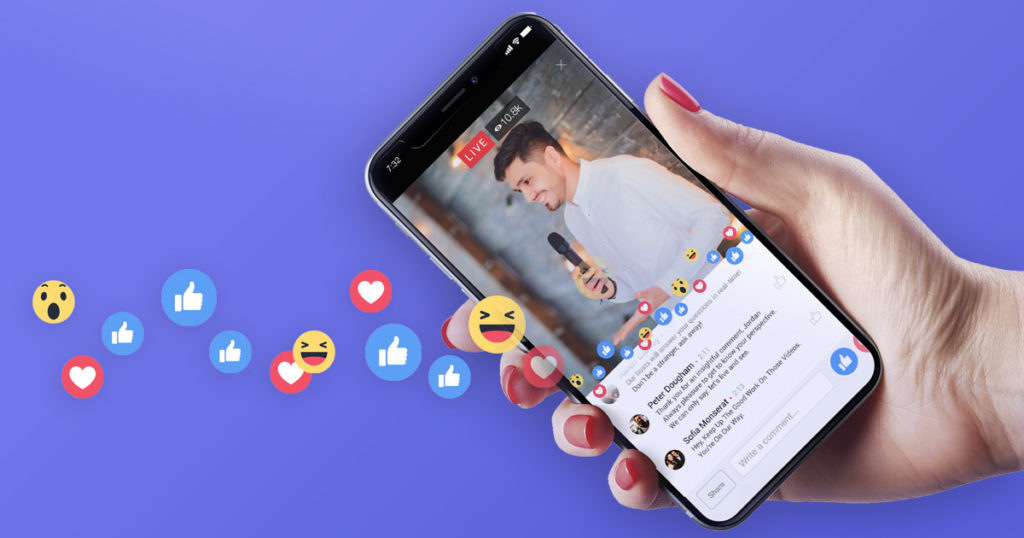
4. Facebook Analytics
Facebook Analytics can help track and measure outcomes to filter your marketing campaign. Insights can help determine:
- Reach and engagement
- Activities
- Visitors
- Views
- Posts performance and more
Add-ons of Facebook insights:
- When your fans are available
- The posts that do well for you
- Your top pages, and much more.
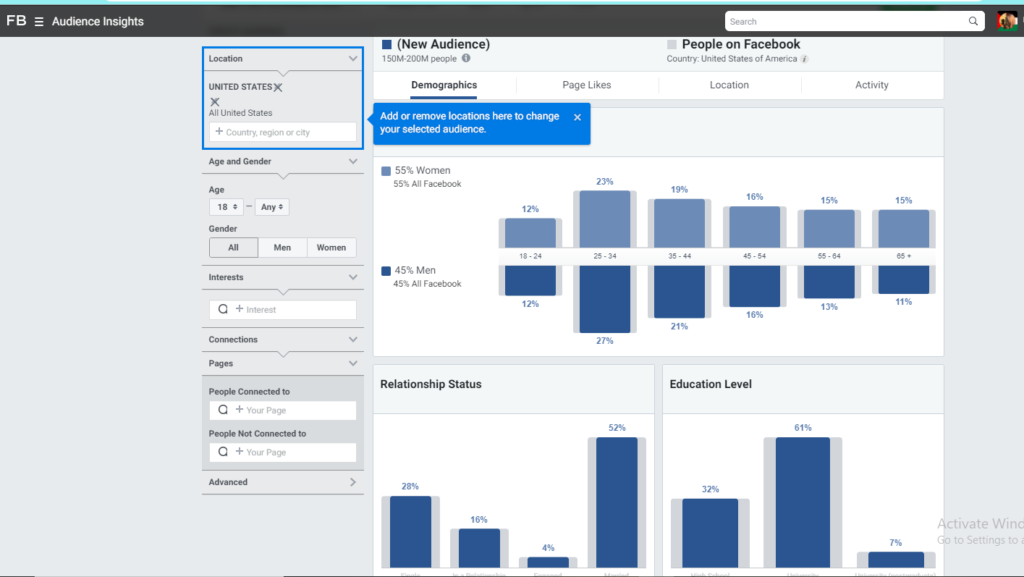
Hey, stop! Where are you about to go? It doesn’t mean Insta is no longer in the game. It also holds some of the blasting chances to promote your business.
Let’s find some top of the heads to drive your business:
1. Instagram Business Profiles
A business profile for a brand can be a real business thing for you.
It personifies your brand with a variety of benefits such as:
- Enable you to use Instagram Insights
- Add a contact button to your profile
- Your preferred job industry
- Add vital links to your profile
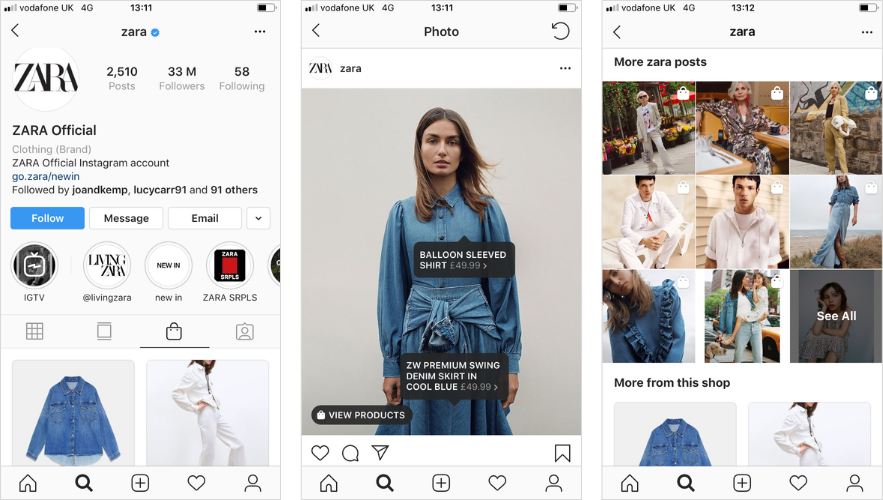
2. IGTV (Instagram TV)
IGTV is a platform that allows you to watch videos and creep up to your audience and new souls.
It can serve with:
- Boosting the range of your products/ services
- Educating and inspiring your audience
- Increasing engagement and conversions
- Help to grow your community
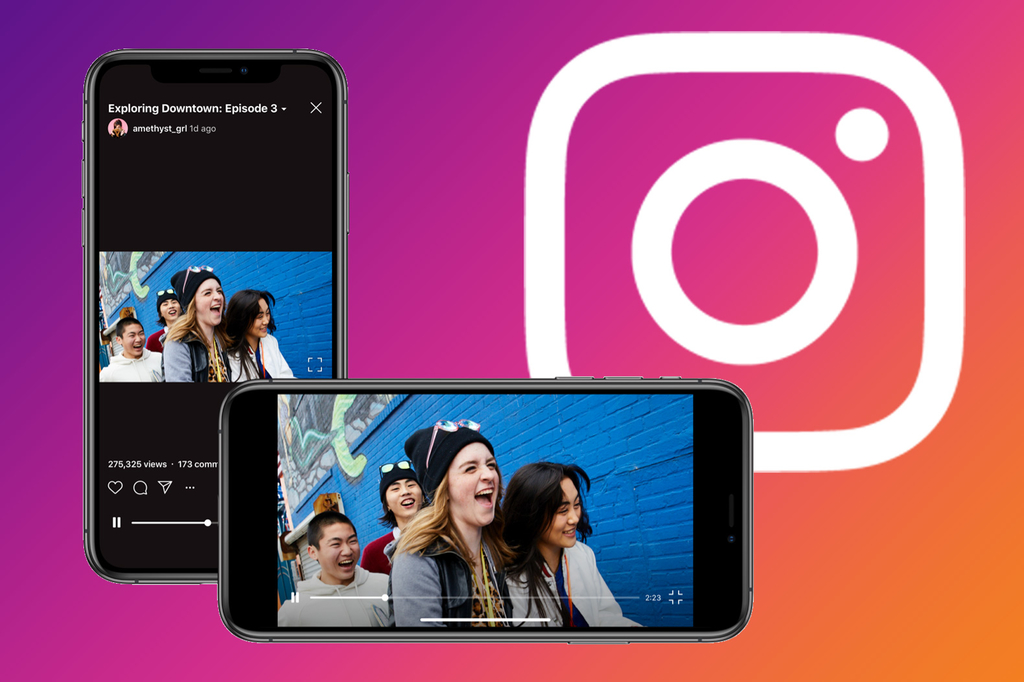
3. Instagram (Go Live)
Identical to Facebook Live, IG Live can provide a real-time session with the audience, worthy of building new connections for the business.
IG live help out in:
- Occupying a high range of targeting
- Getting instant pop-ups for a live stream
- Real-time interactions with your followers
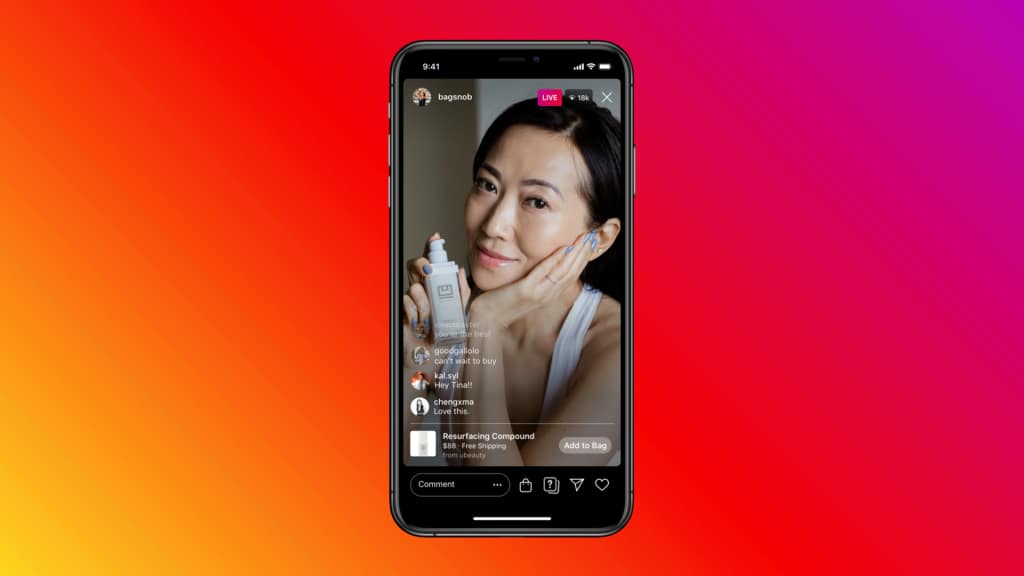
4. Instagram Insights
Instagram Insights is an analytical tool for your company. You can access the data of visitors, view demographics, take actions, and construct a strategy towards your Insta dream.
Insights can help determine:
- Engagement with audience
- Reach & Impressions
- Top performing content
- Profile views
- Follow backs
- Webpage clicks and a lot more
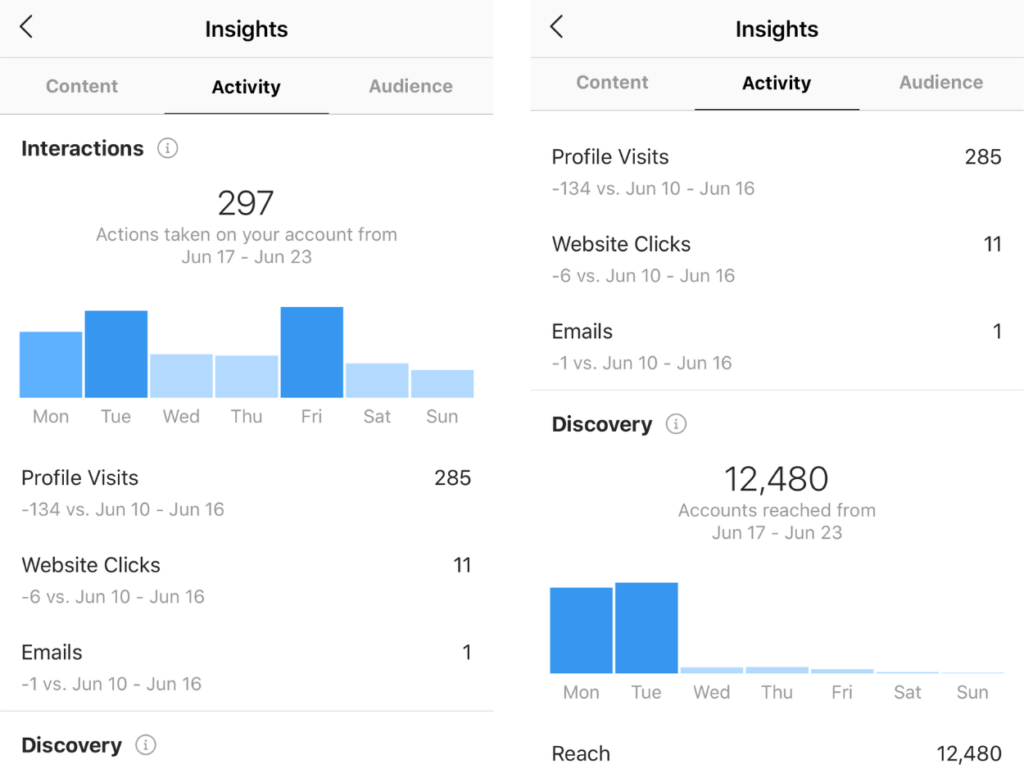
Run Business Campaigns on Facebook & Instagram
To create and track paid social campaigns for business, Facebook and Instagram will both go hand-in-hand for you. Tracking your ROI for sales is hell simple with Facebook and Instagram, and the synergy between the pair will set out the right tracking of successful paid ads.
To conceive the analysis of ad campaigns various tools are on the table for the marketers. Google Analytics can be the perfect solution for your ad campaign review.

Facebook is lethal in its respect, whereas Instagram also splashes the quality for the user. You only have to recognize your place and content type to kick-start your marketing plan.
Eventually, it’s not about which social network you go for. You only need to discover your business nature or the kind of content you’re going to post, or which audience will greet you the best.
Facebook or Instagram? The Business Function
We’re in no mood to let you slip without providing you with a rundown of social media importance. We have learned that Instagram is an image/video-based app, but a lot to be bat around.
Facebook is best known for its extensive content. A Facebook Page imparts a detailed version of anything you search for like business hours, address of the company, or future events. That’s why a Facebook profile snares more time to create than Instagram.
Instagram is all about capturing moments. People who ill-favor to know business hours or dislike to find their friend’s current location love to be on Instagram to feel coupled. In a word, this can prove to be a brand-building facet with Instagram.
We know we sound candied in most of our blog, so let’s continue this Ferrari of thoughts. What makes you most comfortable? A restaurant with a buffet of dishes or one with specialize dishes. Which one is easy to choose? I think we possess the same soul!
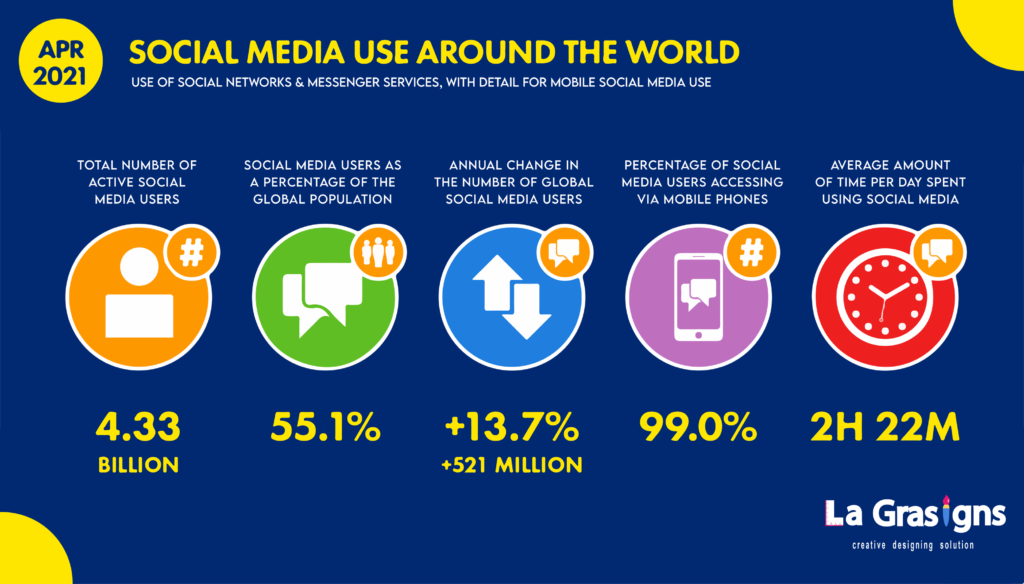
Facebook serves you with the same kind of buffet taste. There’s so much you can do from sharing thoughts to playing games and watching videos.
Facebook holds a bag full of possibilities for each generation. On the flip side, Instagram is like a spot with a specialized menu, serving burgers and fries only. You can’t feel vague, keeping you hyper-focused on a few core specialties.
Which Social Network Is Best For Your Business?
Your business progress depends upon how well you publish your content on these sites. It is not fair to treat Facebook the same as Instagram to post your content.
We have already spotted the splits between the two sites. Now it’s your turn to press the paddle and move on. To get the best out of each platform, post a demo on both Facebook and Instagram.
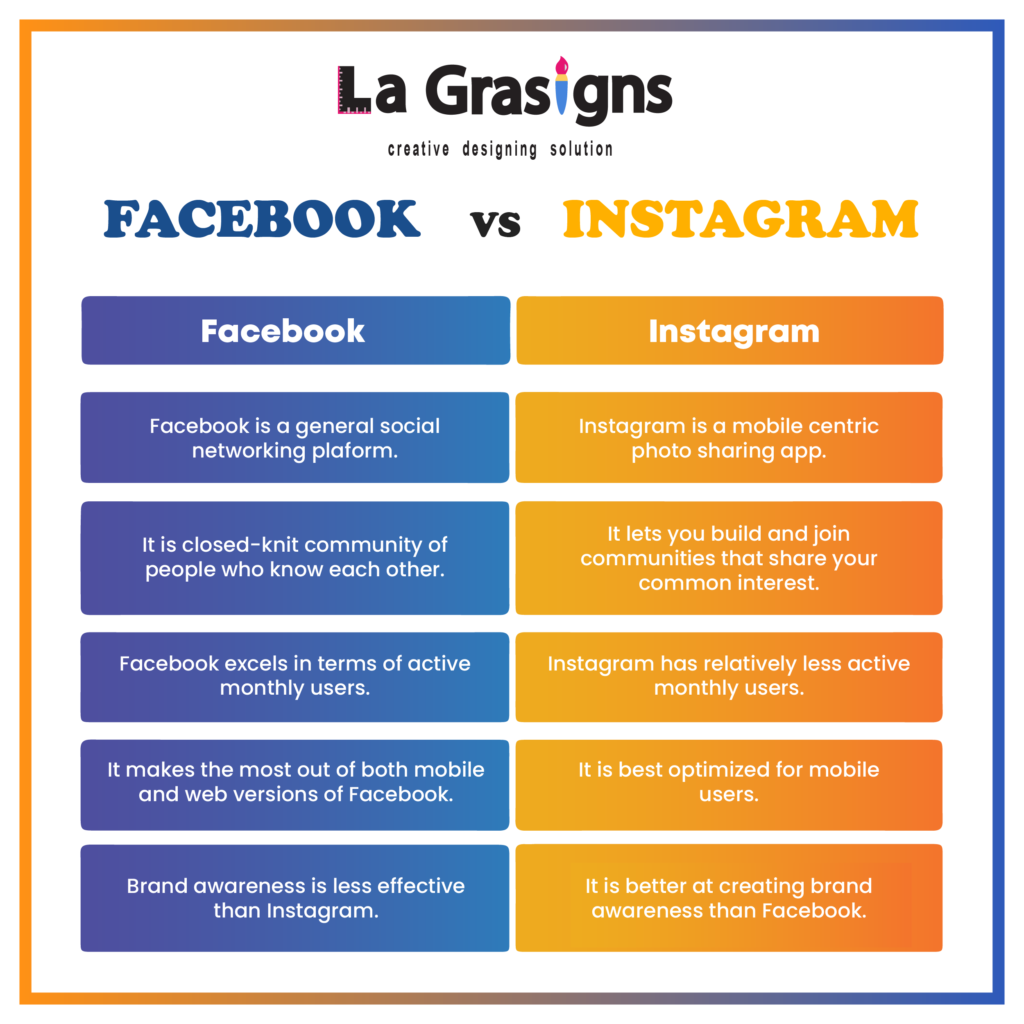
Here’s what you will find:
Shared Content
Facebook is a great platform for shared content. Many of the tidbit content shared on Facebook isn’t original. The blog posts or other content you see are normally shared through different profiles.
But Instagram is all about posting real feelings and visual content. However, you can reshare a meme or photo while scrolling through the app.
Business News
Facebook will be your stop and shop to [post] business news. You’ll have a fair chance to elaborate your story because of its text-based nature.
Let’s say if you have to go under for renovation, create a Facebook post about it and you’re done. But, for Instagram, only share photos of a live spot. See the difference?
Business Events
Are you planning to host a charity event or a public discussion? Now you belong to Instagram as it is the perfect spot for you. You can create a real-time buzz around your fans by sharing off-screen moments.
After dropping curtains, share the best images of the event with a captivating title on your Facebook profile.
Word of the Day
Facebook and Instagram can be a win-win duo if you target the Millennials and Generation Z for your brand. It all depends upon the quality of content and the aptitude of marketers.
If you still feel shaky in picking your go-to platform, come to our site and do some testing. After all, in the end, you don’t want nature to take its course. Be confident. Be Yourself!
To learn more about other digital marketing strategies and best practices, do check out our website and blogging section, of course.
Don’t forget to share this post!
AI stunts Advertisement and Graphic Designing
AI GIVES MARKETERS AND BRANDS SUPERPOWERS, WHICH CAN BE USED FOR GOOD OR EVIL!

Related Statistics
- CMOs most prioritize AI spending areas are Content personalization and predictive analytics- The CMO study discovered that the top user of AI for content personalization (62.2%) are B2B service providers whereas, B2B product companies prefer using AI for AR & VR, visual search, and facial recognition. Source: CMOs’ Top Uses For AI: Personalization and Predictive Analytics. Marketing Charts. March 14, 2019
- 82% of marketers are adopting AI to provide the best customer experience. The timely delivery of content, offers, and other relevant experiences stand second (67%), and performance metrics are third at 57%. Source: Leading reasons to use AI for market personalization as per industry professionals, 2018, Statista
- 81% of marketers believe in spending audience targeting using AI in upcoming years. 80% are already hanging on AI for audience segmentation. EConsultancy’s study found that most marketers are in favor to adopt AI as per its potential to boost marketing and track the growth of the business. Source: Dream vs. Reality: The State of Consumer First and Omnichannel Marketing. EConsultancy
Prelude
In this astonishingly growing world of tech, it’s getting even more challenging to hold peeps’ attention. We’re on 24-hour news shelling, social media platforms trying to retain us anyway, and the barrage of email and messages that seem never-ending. With all this fanfare, it’s a near wonder that companies can get their words across and convincingly communicate their offerings to potential customers.
AI in my opinion is an 'IF THIS-THEN THIS' kind of scenario. It helps the world systems and its recruiters to become smart enough to recognize the preferences and choices people are going to make. Other than that it is only a 'machine learning- sequence of data you store in a computer or a machine to perform the task.
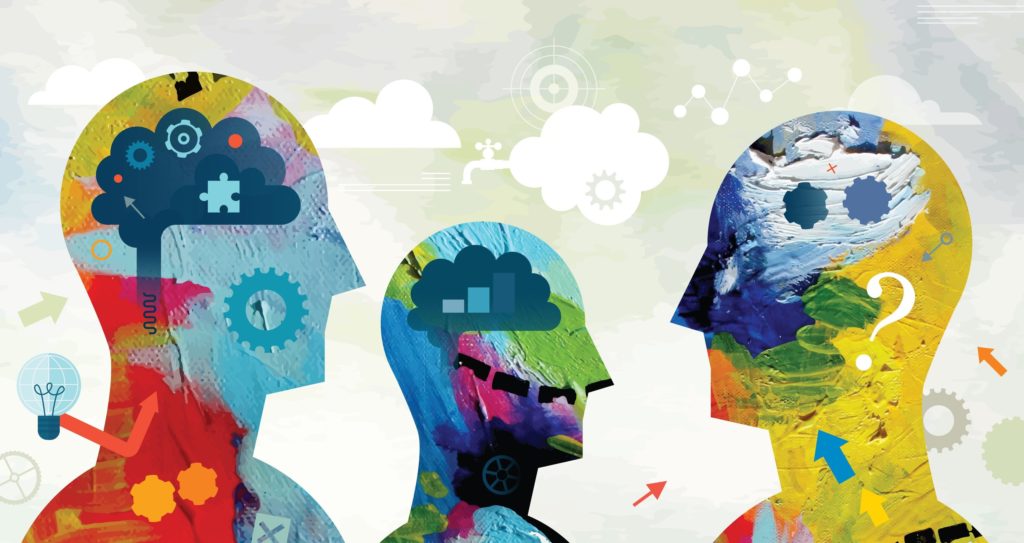
The Nuance of AI
No matter you like it or not, Artificial Intelligence calls for great business ventures!
AI tech or Human competitive machines are reshaping industries from finance to healthcare to retail. In such industries, AI tools are dramatically shifting the course of operating tasks, providing unprecedented revenue breaks, and significantly cutting costs.
Some common AI technologies are all ears such as machine learning, computer vision, natural language generation, deep learning, natural language processing, neural networks, and speech recognition. There are gobs of others, too.
That’s where AI tech beat the traditional software because of such architect design and variety in performing massive tasks.
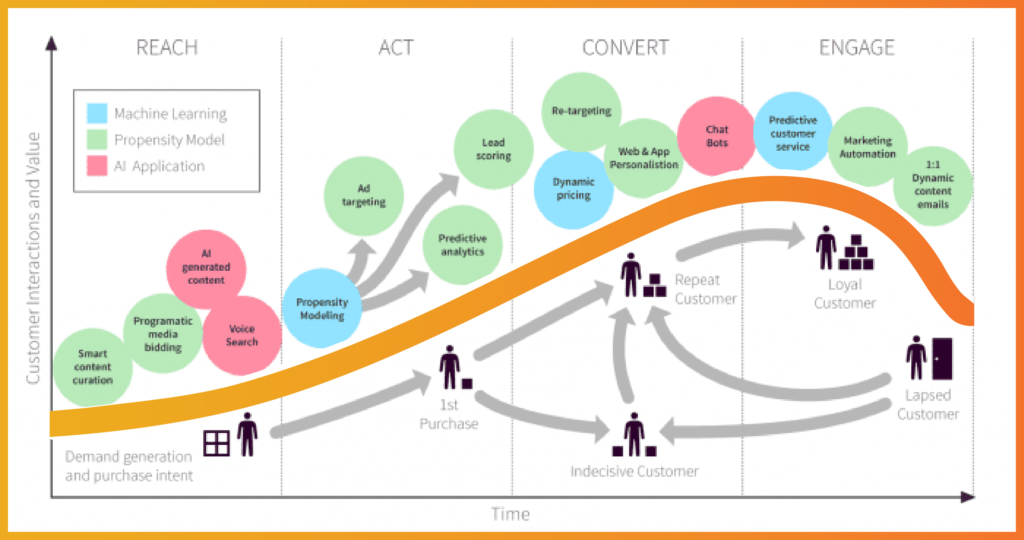
Penumbra of AI in Advertisement & Graphics
In Advertisement Case:
- AI has influenced advertising and the surrounding landscape. Advertisers and marketers want to optimize the large data at their disposal to provide the best campaigns and drive more impact.
- Thus the importance of AI in advertising continues to lift a collar. Before the assistance of AI, it was tricky to gauge the effectiveness of campaigns and where to allocate capital.
- However, media spend is not the only sector of the advertising business being hit. AI affects planning, analytics, and creativity. Hence, other factors are also engaged in how advertising budgets are acquired and spent.
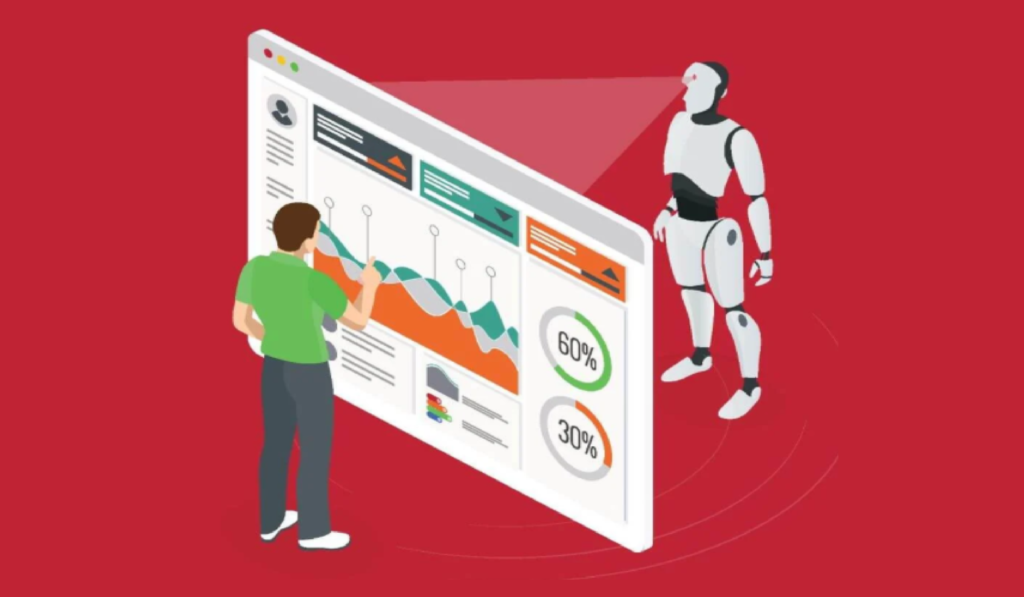
In Graphic Design Case:
- AI provided footholds for designers to create images that are impossible for them to create before. These images are invented by analyzing the users and then designed logos.
- AI even prepared complete layouts for a website via the relevance of different objects with the help of their cognitive abilities.
- The AI-powered systems also enhanced the categorization of the websites with the best color combinations, settings, font styles, and overall design.
Impact of AI on Advertising
AI can force a competitive edge to advertising campaigns through enriched user experiences and reduction in human error. The potential benefits are evident, and businesses are prevailing over this.
The best reasons why industries are increasing spending on AI in an advertisement are:
Break down of AI investments: Organizations invested on average more than $38 million in AI in 2019, which amounted to about 0.75% of revenue. About one-third of companies invested more than $50 million in 2019. AI could contribute up to $15.7 trillion to the global economy up to 2030, far above the current output of China and India combined.
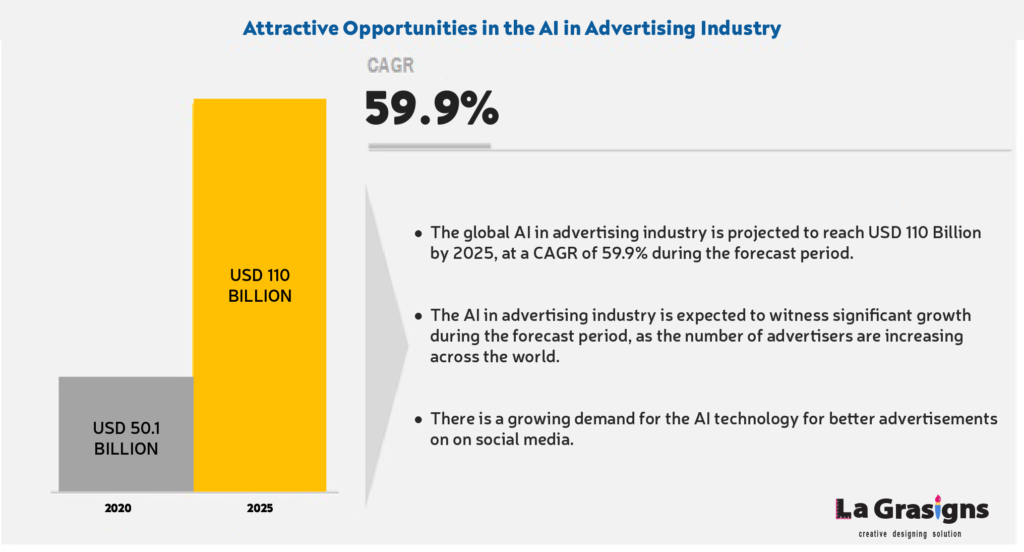
1. Better ROI Effects
Advertisers and marketers have struggled before to determine the status of their campaigns and the actions needed to acquire their results. If we leverage analytics, the companies can establish what is most effective.
Besides, by targeting the best audiences with inch-perfect messaging, your team can bunk advertising waste and improve marketing ROI.
2. Hyper-Personalization Experience
As per Forrester.com, 80% of US customers like to trade with personal information for a hyper-personalized approach from retailers.
Personalization allows businesses to build relationships with consumers over touchpoints. Whether it be using conversational marketing or optimizing creative messaging to connect with audiences.
Your team can benefit from risen brand loyalty and best-fitted advertisements.
3. Cost-Savvy
Automated tasks via AI that are ‘set-and-forget’ free fall investments and resources that marketers could use in strategic objectives. The entire unit can become more productive and dynamic.
Companies can dump trash that occurs naturally as the result of mass marketing by customizing any offer to the minimum amount to influence purchasing options.
Impact on the Other Twin- A Graphic Designing
The impact of Artificial Intelligence (AI) is like a hammer of a Thor for the design industry in recent years. Artificial Intelligence has been influencing almost every business worldwide, graphic designers fall into no different class.
From automated packaging of the products, conversion of Big Data into secret codes to perform, AI has the idiosyncratic potential to hit the system of graphic design in an unprecedented way, hitherto not experienced.
However, this machine intelligence is still often unknown in the field of graphic designing such as how it will perform and change the gears for expert designers.

AI serves the most powerful and robust design systems which include a blended flow of modules, patterns, and elements to build a brand’s design language. Thus, it’s also called a designer’s bosom buddy.
The inclusion of AI in the designing system helps us to:
1. Improve User Experience
Smart user experience is the least spotted angle but turning out to be a new norm for the graphic industry. Like Facebook, which uses AI to show the content of the photo to visually impaired readers and also reveal relevant advertising tactics.
Google Lens by Google, one of the revolutionize AI-powered systems is an optical search technology whose AI elements can detect and display the content in which your camera has been positioned.
2. Create Dynamic Visuals
AI embedded in tools like Prisma or Artisto helps to identify the images’ content efficiently and also applies smart face tech to evoke the best visual effects.
There’s an entire cluster of apps with procreative and dynamic visual styles to augment the designer’s capabilities. Let’s take Auto Draw– another automated visual component app. It helps the user to fine-tune their sketches into fresh and polished forms.
As per the AI experts, the more a designer adopts machine learning tools for drafting sketches, the more smartly AI knows what the users are trying to draw.
3. Build Modular Design Systems
Website such as Squarespace and Wix have integrated AI tech into their workflow to help designers with mundane design decisions.
AI set up more powerful and robust design systems for the designers. The system includes a flow of modules, patterns, and elements to sketch a brand’s design language.
Let’s now take one more e.g. of an app Tailor Brands. A spellbinding service that can create a logo and brand with 100% ease and speed. You can create a logo for your brand in seconds after going through a few quizzing.
Algorithm-built logos get on with diverse colors and elegant themes are also commonly used branding and AI trends.
Real-World Examples for Advertisement & Graphics
“The future of marketing is about the future of experiences.”

According to one of the world’s finest Futurists, Thomas Frey, over 2 billion jobs will disappear by 2030 (nearly half of all jobs on the planet) due to technological boost.
Graphic Designing case in point
The design industry experts predict that only 8% of graphic design jobs, can be overlaid by an automated system.
Here are some fresh cases of AI in Graphic Designing:
- Adobe’s Sensei software uses AI to accelerate methods like filtering through stock photos, editing facial features excluding distortion, and loosen jump cuts during video interviews.
- Websites like Squarespace, Wix, and The Grid capitalize AI to build sites inessential of graphic designers. Users can upload images and text, then follow a library of color combinations and design choices to create a unique, customized website in few easy steps.
- Netflix has adopted AI in its network to kill tedious tasks such as product localization with automated processes. AI eased the process for designers who only need to check the graphics and manually set them if required.
Advertising case in point
Artificial Intelligence makes the path fertile for marketers in recognizing sales cycles better, exchanging their strategies, and spending to sales results.
Marketing in new times is more analytics and quant-driven. It enables CMOs to know which metrics and KPIs to track and why they fluctuate.
Now read the most impressive AI usage in marketing & advertising:
- Magnolia Market, the brick-and-mortar shop “inspires you to own the space you’re settled in.” The space Magnolia has created is a real brand experience of food, games, shopping, and a garden. They’re blended with Shopify Plus to create a storefront and an augmented reality app that gives users the luxury to view products in 3D and “place” them in their homes. This unforeseen pleasure set Magnolia apart and grew its e-commerce arm, a vital driver for company growth.
- Chase Bank with the assistance of Persado, included machine learning experience in their copywriting, which actually helped the bank to achieve more humanity in their marketing. Like the one, a digital ad was written by humans: “Access cash from the equity in your home.” Persado’s version has turned the heat, which read: “It’s true—You can unlock cash from the equity in your home.” The latter version played better than the former with customers.
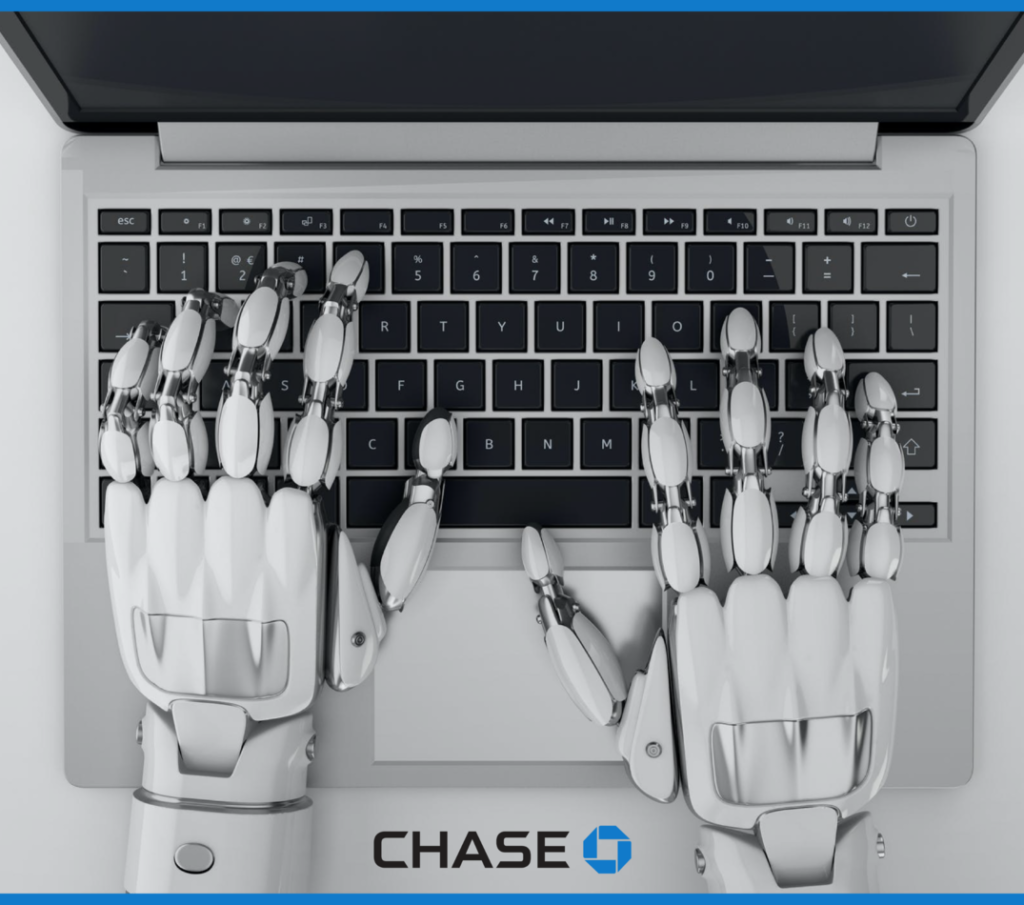
- Nike launched a system in 2017, provided customers with incredible fun to design their sneakers in-store. By using augmented reality and projection systems, the site then displays the design on the empty shoes. The customers are then able to view their custom designs on the sneakers in about 90 minutes. This user-engaging feature not only drove sales but more importantly, allowed the Nike brand to flock data about customer preferences.
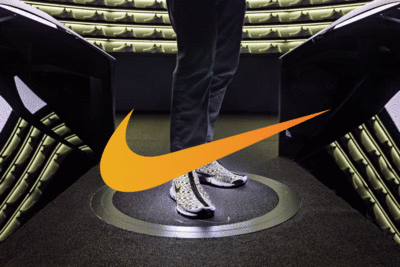
Adopting AI in the Moment of Truth
We are going to recap the mentioned version into three core points:
- Rather than sensing AI as a threat to their livings, professionals should view this sensational technology as an opportunity to drive high ROI effects via creative and strategic means.
- No doubt, AI has nearly swept through every business across the world in the need to acquire productive results and to automate work efficiently with the help of its cognitive abilities.
- Due to its enthralling effects in almost every industry, such as customer engagement, copywriting, data conversion, designing of an image, facial recognition, augmented reality, creating dynamic visuals, or others we must now embrace AI in our businesses to take the lead against our competitors.
Why Outsourcing is Important in 2021?
What is Outsourcing?
Outsourcing is a concept people get enthused about. Some business prefers it; others avoid it. It seems as though nothing can galvanize business people in the office than to out-task some services for the growth of the brand.
Companies use various types of outsourcing like; within their own country (onshore), to a nearby country or with the same time zone (nearshore), or to a more distant country (offshore). Businesses often like to outsource services to nearshore and offshore markets to save costs.
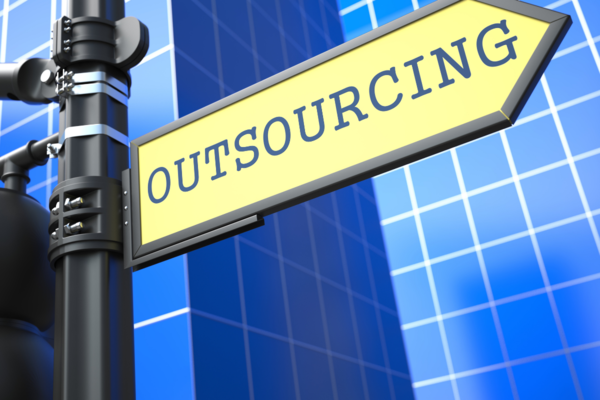
A Usual Phenomena
Outsourcing is a business's working pattern in which services or job functions are hired out to a third-party- a stalwart outsourcing company or a freelancer. Normally small groups or companies outsource their payroll processing, accounting, delivery, and many other vital roles — often because they lack choice. In contrast, many large companies opt to outsource to save on further costs. In response, industries have come forward to serve businesses’ outsourcing calls. But still, many businesses miss the benefits of outsourcing in these times.
Although some people will be at odds against it until they get knocked on the head, outsourcing can play a vital role in growth for virtually every business today.
Outsourcing can indeed save money, but that’s not the only good excuse to do it. Smart outsourcing can yield many extended benefits. It has also become a trendy tool for diverse companies around the world because of the subsequent benefits:
Keep reading the trendy benefits below:
I. Business Process Automation /BPA
There always be room for improvement with outsourcing for the companies. One of which is having Business Process Automation (BPA) to reduce manual labor and stimulate outputs.
BPA is a great tool to have in hand when it comes to discharging simple, monotonous tasks that employees are casual with or frenzied to perform for the business. With the fusion of AI (Artificial Intelligence), you can efficiently perform assignments without the need to add up extra staff in your company.
Robotic Process Automation or RPA is, however, the main branch of the automation process. As there are no real robots involved – just software code that stays on user machines or company assigned servers.
Robotic automation has been made to manage front-end work with existing employees meddling in to finalize the project. This human-machine alliance is optimal to boost competence & to embed the best ROI on every outsourcing money spent.
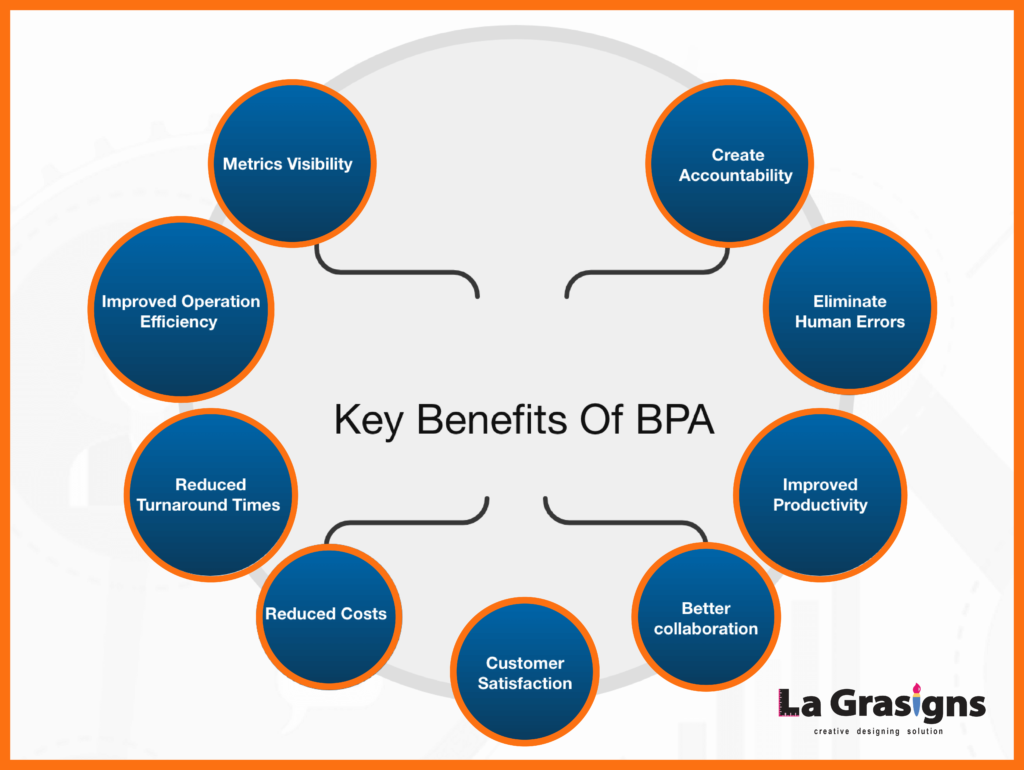
II. Outsourcing Boosts Productivity
The outsourced talent can allow us to balance the business output with ease. With the new projects pop up or brands undergo a sudden rush in demand – outsourcing can provide the track needed to keep pace in the industry.
Outsourcing allows you to hold on-demand” talent resulting in the rapid achievement of tasks without recruiting full-time employees.
It provides the significance of releasing the outsourced workforce once the rush is over with no strings attached.
Should the need for extra help hover again in the future, the same rules apply? You can open up to the same expertise as often as needed to keep operations sailing smoothly. In a word, outsourcing yields a fruitful, reliable workforce ready when you need it.

III. Cost-Effective
To become cost-savvy in terms of outsourcing may not be the only reason but it’s surely a major factor. Businesses in these times embrace outsourcing as a means to better control cost over the outsourced function.
Since it turns fixed costs into variable costs, provide a capital resource for investment, and cut off high expenditures in the early stages of your business.
Outsourcing leverage the professionals to get their work done at a very low cost and in a much more efficient way. There is no doubt a huge difference in the wage patterns of the developed and the under-developed companies of the world.
Why we shared this thought with you? Because the workers from the developed countries charged a high price for the tasks whereas employees in the developing countries perform same at a base rate and the difference varies to up to 60%.
In consequence, offshore outsourcing allows companies to get superior services at a low operational cost.
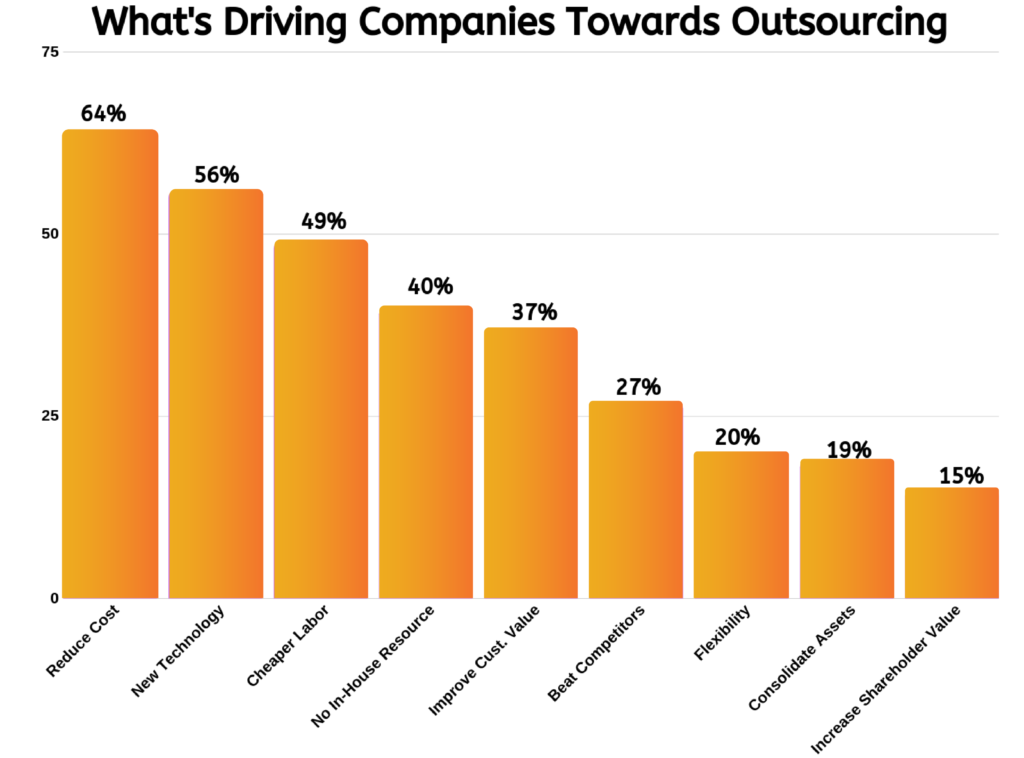
IV. Outsourcing Reduced Risks
Risk assessment and analysis is some of the most important factors in any business project. Every business and business capital must witness a certain amount of risk within their trading campaign.
Logically, market status, competition, financial conditions, state regulations and technologies can change with unexpected effects. Outsourcing the business tasks to the field specialist can become lucrative for you.
As they are trained to detect and manage the risk your business is under which makes them convenient to nourish your brand and make it strong as per your expectations.

V. Outsource Business 24/7
Unquestionably, if your business functions 24/7 then it should cost you a good sum, right?
Nevertheless, it’s quite important for the growth of your business that it shows up 24 hours a day. This probably encircled you by extra shifts of employees and will go big on your business budget.
So how can outsource shift the banners for your business in this regard?
Well, take a sigh of relief! You can vouchsafe services by outsourcing around the clock at a fraction of the cost.
Let’s say if your business is located in the west and you aim to outsource a project to some developing country. So your BPO vendor can keep on functioning in alien hours even when your in-house employees have punched out.
Besides, if your outsourced partners have rooted in a country with cheap salaries, you’ll save a small fortune! This will bring in amazing outcomes for your business as you cater 24×7 to the customers’ needs and concerns.
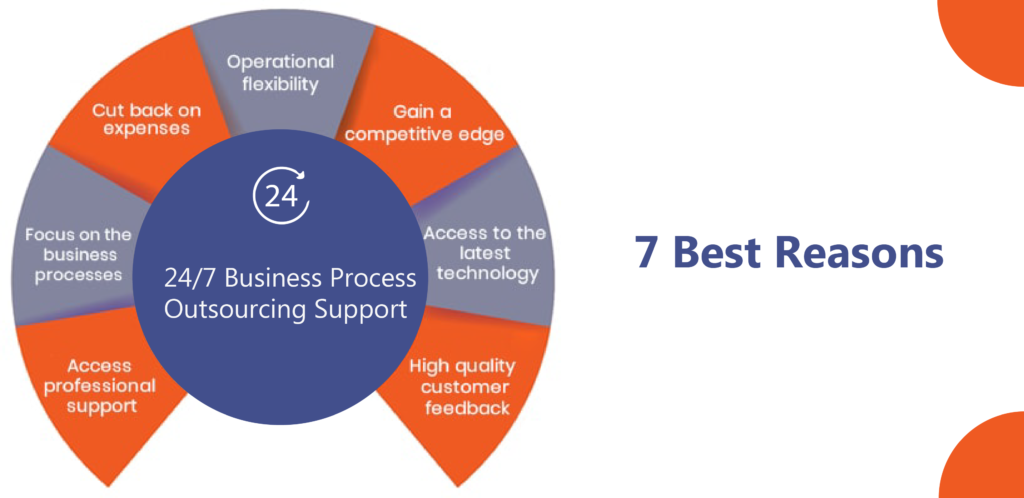
VI. Tech-Driven Model
Many of the business experts praise the outsourcing of information technology functions and other tasks to earn easy passage to new technologies.
Besides, businesses also need to anticipate the infrastructure cost when it comes to in-house services. Companies that tend to hire-out HR services might choose to do so because embracing a new payroll system is expensive.
The plan behind the outsourcing of customer services is to find the facile means of technology, important for the modern contact centres with splendid support services. The outsourced group has already contributed to the technology against the services you seek—and reps are also upskilled for it.

VII. Better Space and Resource Utilization
Outsourcing can provide you the business relief with the best space and resource utilization. You can use the free-up space for other core business activities rather than confine it to inventory supply storage.
The additional space can also be used to hold inventory for other projects that may seem dispersed due to space constraints.
For instance, by merging with the manufacturer that takes on inventory programs like JIT & Kanban, stock can be delivered when companies need them. Hence, you’ll be able to hold valuable space for the inventory storage which is kept casually for a long period of time.
At times, an entire assembly that is ready for production can be released, no need to store components altogether. Buyers can also simply order frequent goods, knowing they will arrive in time and well assembled.

Importance of Outsourcing- Building a Better Brand
Organizations nowadays live through a global business to take part in the international economy. To counter the success, they should extract the most out of every growth opportunity to boost brand visibility and reduce costs.
An experienced outsourcing provider will drive you through productivity challenges and streamline services, and further add new resources that may be required in-house. Industry heads like LaGrasigns can expedite your business process outsourcing (BPO) and robotic process automation.
Our pro experts can roll out and move fast while rendering the relief needed throughout every phase of the business journey.
Bonus Tip: LaGrasign’s personnel network adds a global workforce loaded with many talented peoples' who maintain strong technical, educational, and industry backgrounds.
Each contractor is vetted ahead of time and guided throughout their work. They bring custom-made skills under your nose and enable you to focus simply on the preferred task.
This postulation will allow you to get rid of hiring or training additional employees, thus empowering existing ones for higher-ROI outcomes. Balancing employee roles with their aptitudes improves engagement and makes for the best use of company talent.
If you’ve ever conceived of outsourcing as a primary source for business, there’s the best time of living it up. LaGrasigns offers versatile package plans based on usual case scenarios but also creates tailor-made solutions across unique brand needs.
Chase for us now; one of our exclusive business reps will serve you and help you get underway.
Don’t wait and drop the game! Your competitors are already capitalizing through outsourcing to succeed. Let’s get started by signing up for a free account, and our sales coordinator will drive you through the process.

The Best Outsourcing Companies Globally
1) IBM
IBM is a New York based IT company carrying out operations in 150+ countries of the world. They offer IT outsourcing and various high-grade BPO services across numerous industries.
The company has now been shifting its charm to fields like IoT, machine learning, & big data analytics.
Leading clients: PayPal, American Airlines, Amazon & Volkswagen
Outsourcing Sectors
- Business and consulting services
- Procurement strategy
- Staff development
- Talent acquisition
2) Accenture
Accenture is a global professional services company with holding headquartered in Dublin, Ireland. It has been fortunate to have an alliance with Google, Apple and Microsoft in the past. Most of Accenture’s clients are three-fourth of the Fortune 500 companies from the world.
The company has been a constant member of the Global Outsourcing 100 with over 10+ years of experience in the field.
Leading clients: World Bank, American Express, 90+ companies of the Fortune Global 100
Outsourcing Sectors
- Healthcare service management
- HR services & functions
- Support and acquisition services
- E-commerce system and sales
3) Sciencesoft
Sciencesoft is an IT service group with outstanding custom software development. The company has its roots in the USA and feed to mid-sized and large businesses globally.
Sciencesoft is also known for its web application and mobile app development services everywhere in the world.
Leading Clients: Salesforce, Walmart, eBay, and Nestle.
Outsourcing Sectors
- Software development
- IT strategy & management
- Crisis & Quality control
- IT help desk outsourcing
FAQS
1. WHAT ARE SOME OUTSOURCING PITFALLS AND HOW DO I AVOID THEM?
Common pitfalls might include miscommunication, lack of attention, skill level issues, poor delivery, lack of creativity and security concerns. Many companies now have formed departments like the Vendor Management Office (VMO) to better communicate with their BPO providers.
2. WHEN IS THE RIGHT TIME TO OUTSOURCE?
Are you a core competency service? Or have you reached the edge in your growth trajectory where scaling support teams will pull out from your business mission? When it becomes vital to lift your growth strategy and reducing costs it’s a good time to outsource your business process, customer care, or tech support.
3. WILL I LOSE CONTROL OF QUALITY IF I OUTSOURCE?
You will certainly not lose quality control if your outsourcing group is well-trained in recruiting, hiring or training the outsourcing team. With the best management and quality control methods in place, an outsourced group will ensure that there must be a steady approach to KPI achievement without escaping customer satisfaction.
What Is AI’s Customer Recommendation System?
AI’s customer recommendation system is now a super useful kind of stuff for multiple e-commerce industries around the world. It is a medium used by developers to predict peoples’ intent or choices in advance. Generally, recommendation systems algorithms rely on the history of purchases and page views carried out by the customers.
In these digital times many brands suggesting in-the-moment recommendations which are blended with artificial intelligence to look into the user’s interactions and find visibly decent products that will urge any individual buyer.
With the inclusion of AI, recommendation engines can make fast and to-the-point recommendations that are proportional to customer’s needs and preferences. Besides, online searching is also improving due to AI smart fusion since it makes recommendations allied to the people’s visual preferences instead of product types.

Artificial intelligence consulting engines are now the pain point for every business around the world. It is surely the remarkable alternative of search fields since they take you to the most preferred item or content you may like and may not find in another way.
That’s why sites like Amazon, Facebook, or YouTube are the well-wisher of the recommendation engines as they can lead you to a luxurious customer experience.
Let’s dive into the working mechanics of these super-smart recommendation systems and see how they acquire data and show recommendations.
How does a Recommendation Engine Work?
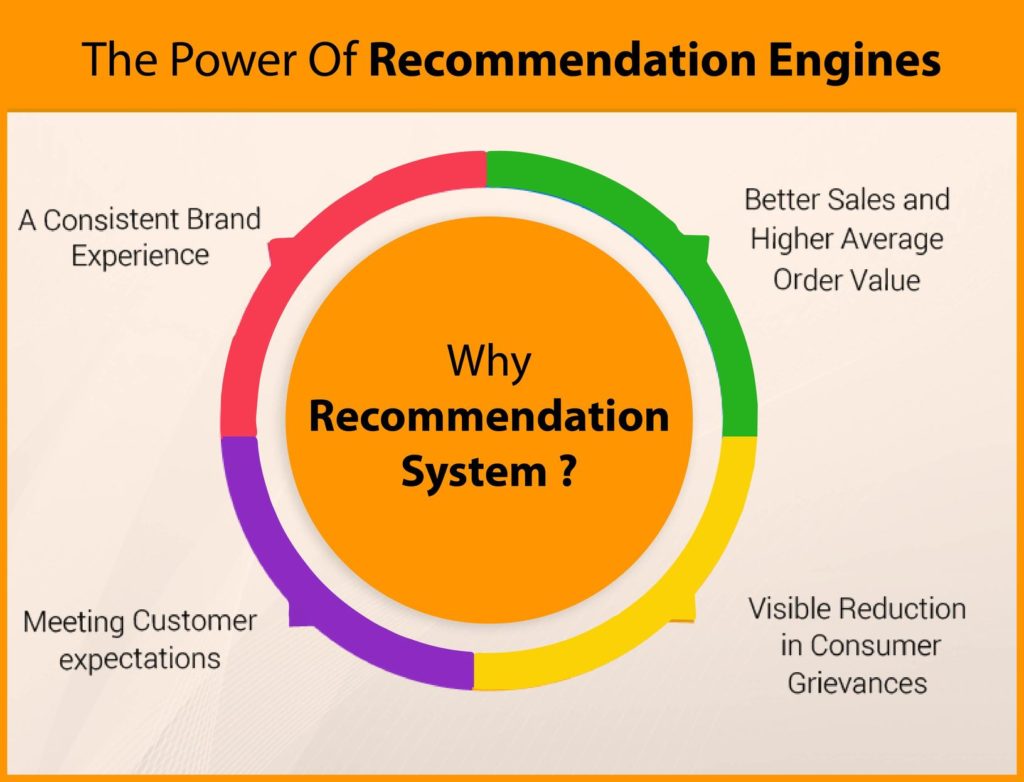
Shopping is one of the die-heart experiences for customers worldwide.
Remember, for a spell we used to consult with our friends about the purchasing of a product. Hence it’s the essence of people to buy things recommended by our buddies, whom we feel trusted with.
Digital times might be inspired by this ancient habit. Therefore, many of the online shopping sites you visit today, indulge with some kind of recommendation engine.
With the help of algorithms and data, recommendation engines offer the most relevant products to a specific user. It’s like an automated shop assistant. If you ask one thing, it also suggests another one that you may be interested in.
Machine Learning & Recommendation System
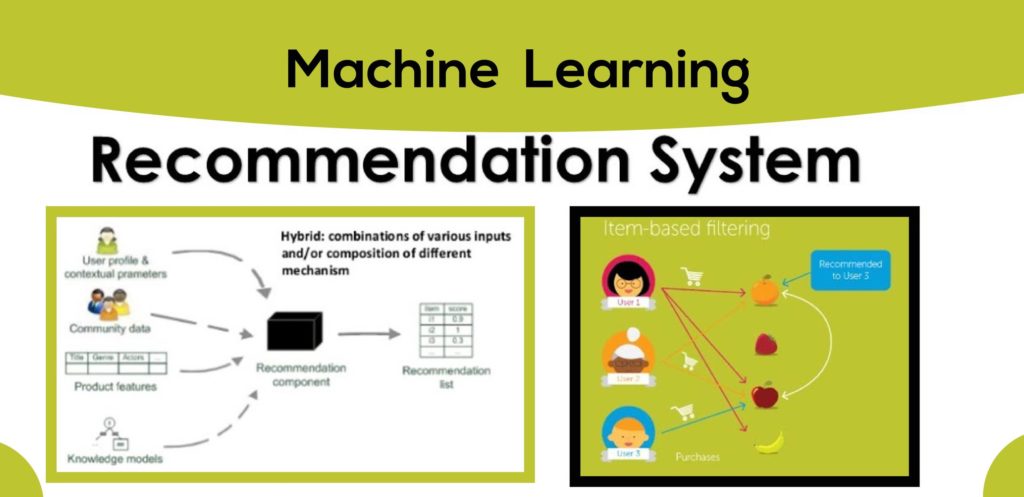
Algorithms are the key source to provide service or product recommendations to the customers. They can even manifest the most accurate predicting process for the search engines.
The algorithms alter themselves due to the data acquired from recommendation systems. The machine learning algorithms are normally split into two main categories; collaborative and content-based filtering.
Content-based filtering recommends the product with similar attributes and collaborative methods include the items which are similar from customers’ interactions.
With the thunderstorm of visitors on the internet, it has become the need of the day for businesses to adopt machine learning algorithms that predict the intent of the customers while searching for their featured item.
Recommendation Systems “Four” Phases
Standard recommender system processes data through these four phases:

· Collection of Data
Data collected by recommendation systems can be either explicit like data fed by customers (reviews or comments) or implicit like the page views, purchase history and cart events.
Collecting behavioral data is not complex, since it can be obtained by the user’s activities once they logged into your site. The recommender engine becomes smarter as it imbibes more data and the recommendations get more relevant as well, urging users to click and buy.
· Storing of Data
It all depends upon you what type of database you want to use to create recommendations, such as NoSQL database, a standard SQL database, or some kind of object storage. A scalable and organized database squeezes the required tasks to minimal and targets the recommendation itself.
· Analyzing Data
The customer recommender system analyzes data then suggests items with mutual user engagement by filtering it with different analysis trends like real-time analysis, batch analysis, or near-real-time analysis.
· Filtering Data
The last phase is filtering the data to give smart recommendations to the users. To implement this method, you must choose an algorithm that matches the engine you use. Consider some of the filtering methods:
Content-based Filtering
It revolves around the specific shopper. The algorithms catch the actions like page visits, time spent, products clicked on, and more. The system is developed relied on the description of the products the user prefers.
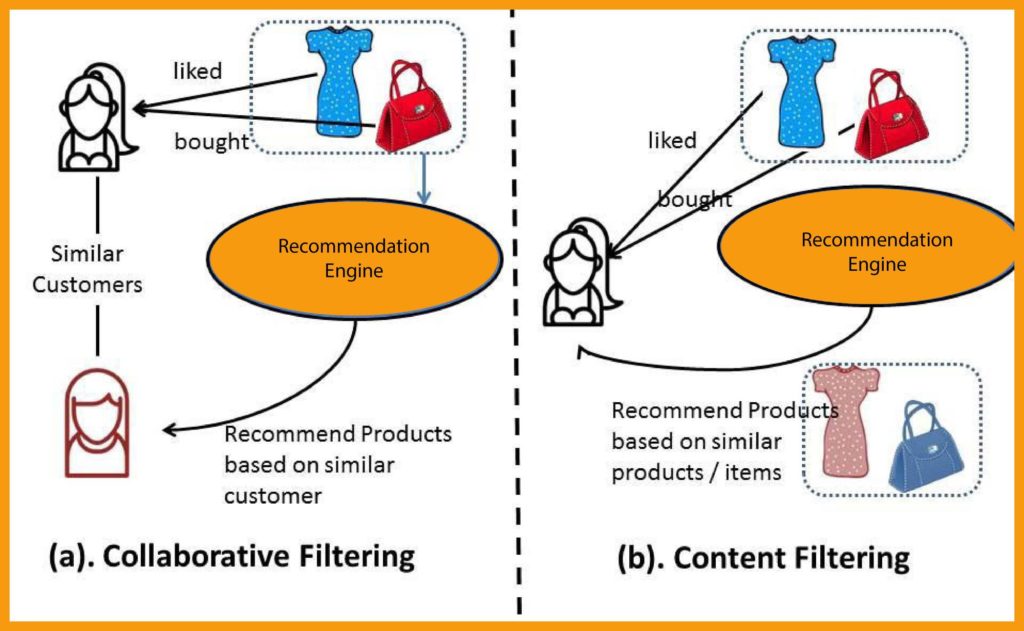
Cluster
Cluster analysis includes the grouping of objects in a way that objects in one group are more similar to the objects in other groups. An example would be recognizing and grouping customers with mutual booking activities on a travel portal, as shown in the following figure. In this sense, recommended pieces fit each other despite what other people have seen or liked.
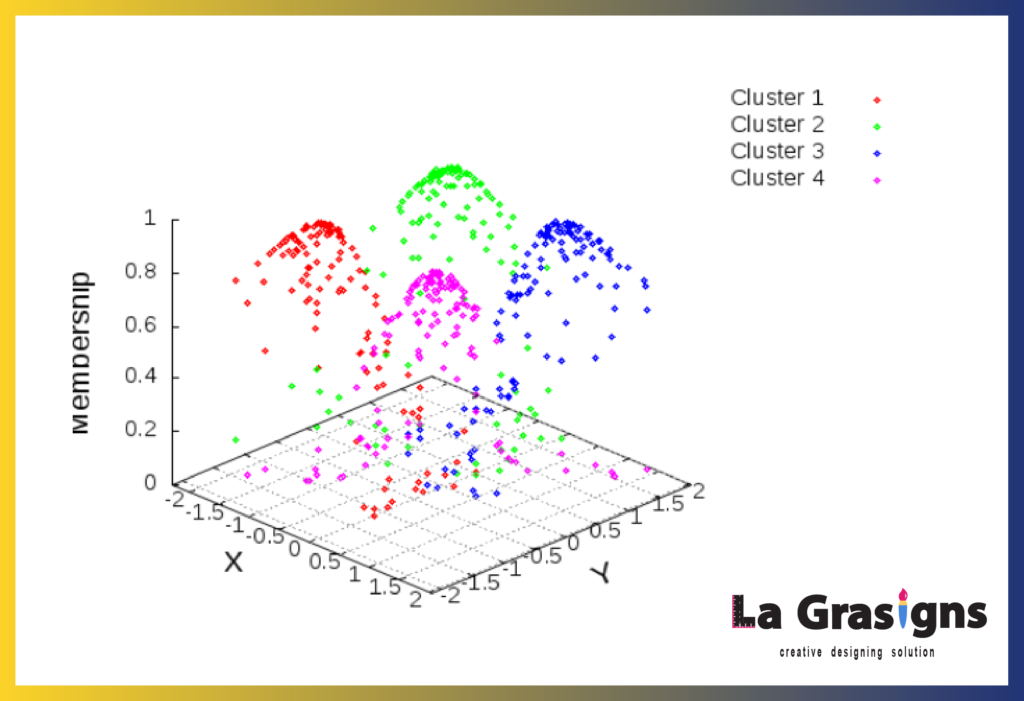
Collaborative Filtering
It allows the users to create product attributes and predict the recent tastes and preferences of the customers. The spirit of collaborative filtering is for instance; two users who have enjoyed the same service before will pick the one in the future.
Amazon’s Recommendation System
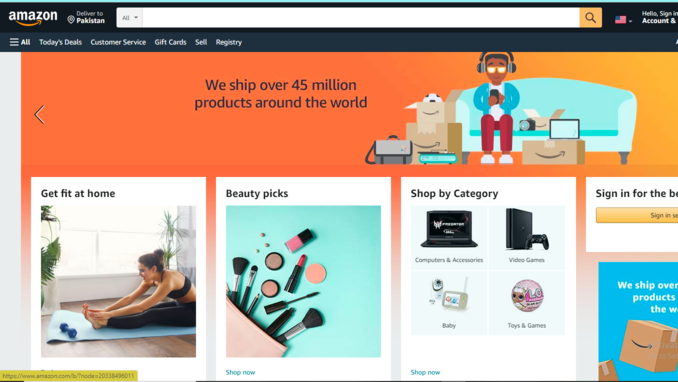
Amazon is a tech goliath that is super smart in creating headlines within the industry. It has become the world’s largest retail market leveraging customers with almost everything they desire.
Its algorithms and innovation have pulled Amazon to the formidable height of success.
Unprecedented Algorithms of Amazon
The hilarious Amazon’s success follows the trailblazing recommendation system. The company recorded a 29% sales increase to $12.83b during its second fiscal quarter, up from $9.9b during the same period last year. A lot of that growth was conditioned to the way Amazon has integrated recommendations into nearly the whole of the purchasing process…”.
Amazon’s collaborative filtering is the core of product recommendations online. It’s “collaborative” because it predicts a mutual customer’s preferences on each item.
As per item-to-item collaborative filtering, the recommendation algorithms would review the user’s recent purchases and suggest a list of related items against each purchase. These suggested items are usually the recommendations by Amazon’s algorithms to the visitors.
Amazon’s Multiple Ways to Recommend Products
Amazon.com caters more than 35% of its revenue by its amazing recommendation engine strategy:
1. On-Site Recommendations
“RECOMMENDED FOR YOU, JUDAH”

Click on the “Your Recommendations” link on Amazon.com and see a page full of products recommended only for you. The site also recommends a different category of products you’ve been browsing, to trick out products in front of you that you’re likely to click, shop, or buy.
2. FREQUENTLY BOUGHT TOGETHER
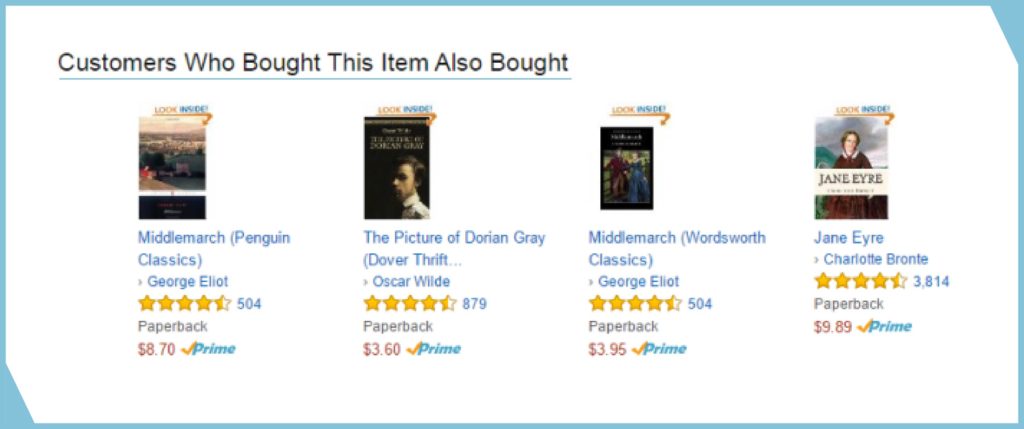
This recommendation is to increase the average order value of Amazon. Thus, it aims to up-sell and cross-sell customers by showing suggestions based on the products in their shopping cart or down the line products they’re only glancing at on-site.
3. BEST-SELLING PRODUCT
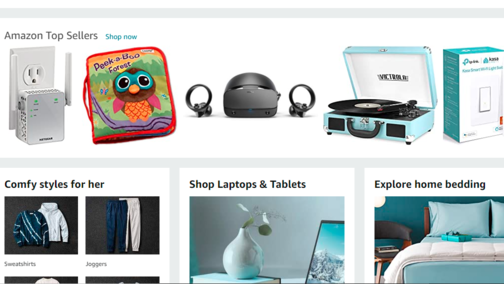
Amazon.com recommends top-selling items for shoppers seeking the new and latest products. ‘Best-selling’ category adds on a social proof element to the recommendation, that ‘other people bought it and so should you.
Bestsellers from a specific category help a user find hot products and buy from new sellers they may never have experienced before, which unfolds a whole new field of up-sell and cross-sell opportunities.
Netflix Recommendation System
Netflix Recommendation Engine (NRE) filters over 3,000 titles at a single shot using 1,300 recommendation clusters depends on user preferences.
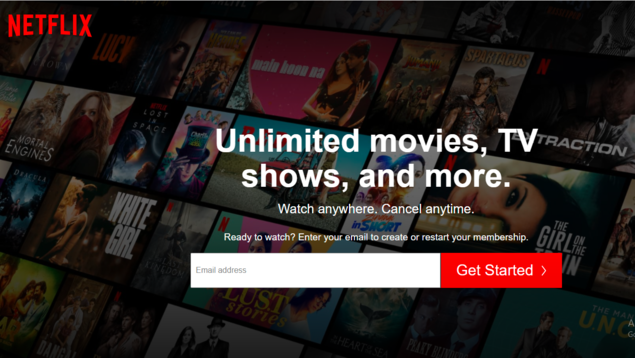
It is a subscription-based model that offers customized recommendations, to help users find their favorite shows and movies. To enable this, Netflix has created an exclusive, complex recommender system. These are the following attributes of Netflix’s recommendation system:
Super Smart Netflix Algorithms
Netflix recommends titles for almost every user on their platform. If you use Netflix, you may have seen they have really precise genres: Romantic Dramas Where the Main Character is Bald.
It is so damn reliable that 80% of Netflix viewer activity is under the heel of personalized recommendations.It’s surprising that how do they come up with those genres? And provide recommendations to their 100 million-plus subscribers who have already perceived recommendations from almost every platform they use?
Machine learning, algorithms, and creativity. These are three magic skills that let Netflix users smash preconceived ideas and get the content, they might not have initially thought of watching.
Types of Algorithms Netflix Use
Netflix uses a variety of algorithms for multiple reasons to provide an exhilarating experience to the users, catch sight of:
Personalized Video Ranking (PVR) — This algorithm is for general-purpose, which usually filters down the list by some criteria (let’s say Savage TV Programs, US TV shows, Fantasy, etc.), combined with side features plus user features and popularity.

Continue Watching Algorithm— It insists on programs that have consumed by the user but remain incomplete, typically:
- Episodic content (e.g. drama or web series)
- Non-episodic content (e.g. half-watched movies, episode-less series like Black Mirror)
The algorithm adds up the probability of the user continue watching with other context-aware signals (e.g. time elapsed in watching, point of desertion, gadget watched on, etc).

Trending Now Algorithm— This captures secular trends which Netflix assumes to be strong predictors. These short-lived trends can range from a few minutes to days. These trends are usually:
- Seasonal stories or trends which also repeat themselves (e.g. Solidarity’s day leads to an uptick in Patriotism videos being watched)
- Solo, short-lived events (e.g. Coronavirus or other furious events, leading to a temporary interest in documentaries about them)
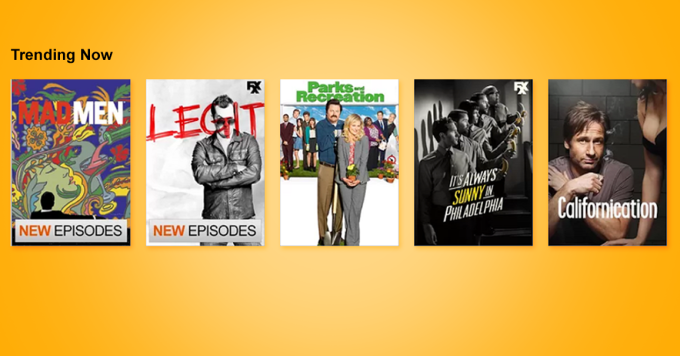
Conclusion
- Recommendation engines at this digital time bring about unreal success for any online business. But, relevant recommendations in real-time require robust abilities to correlate not just the services but also customers, logistics, inventory, and social data.
- All in all, customer recommender systems should be seen as a stalwart for any e-commerce business, and speedy future developments within the industry.
- In our opinion, AI’s customer recommender systems are a proven strength especially for marketing and advertising of products. It flourishes customer experience and can turn your brand into a worthy one. Get the smart and innovative marketing services for your business with LaGrasigns evolving strategies anytime, anywhere around the world.
How to Build A Brand Strategy?
When we are about to build our brand strategy, it’s not enough to simply have a copy and paste approach from some jumbo brands of the world.
We need both a thorough understanding of strategies and how these strategies will be effective for the business. Why? The more indulgent you are in your branding strategy, the rapid it will bring success to your doorsteps.
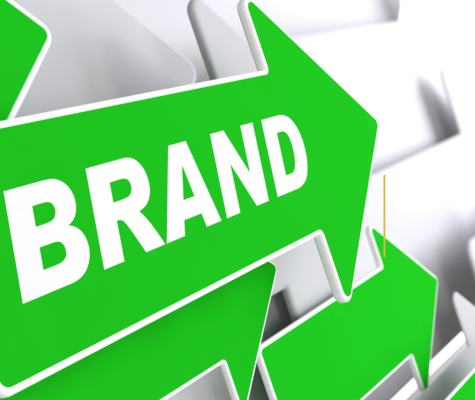
What is a Brand Strategy?
Your brand should be above your logo, title, or slogan — it’s the ultimate depiction of your company, product, or service towards your customers.
Brand strategy is a plan that encircles definite, long-term goals that can be met with the evolution of strong tactics– the combined ingredients of your business’s nature that make it identifiable.
Your brand strategy should be able to portray your own style, your values, and the ethics you adopt. And while it includes other creative elements like logo, web design, your preferred outlook, and slogan.
Rather, your brand should personate the day-to-day interaction you have with the market:
- Your website’s messages, proposals, and campaigns style
- Your thoughtful images
- Your attitude towards the customers
- A customer’s view of your vs your rival(s)
Is a Brand Strategy Pivotal for Businesses?
Branding is the core element to target the huge consumer markets. It also plays an important role in the B2B business as it helps you keep tweaking your competitors. Your brand strategy brings your ambitious positioning to life and works to build your specific spot in the minds of your prospects and customers.
In a word, writing your brand strategy is about revealing your brand’s story.
Brand storytelling takes in the reason to start your business, your ultimate goal, and the values and principles of your company. This will motivate your customers to know deeply about you.
To narrate your brand’s outline not only gives vital information about your company but also urges customers to memorize your brand. Meshing with your company’s portfolio will keep them loyal to your brand as well.
Does your business have a set strategy for the brand? Which case do you fall into?
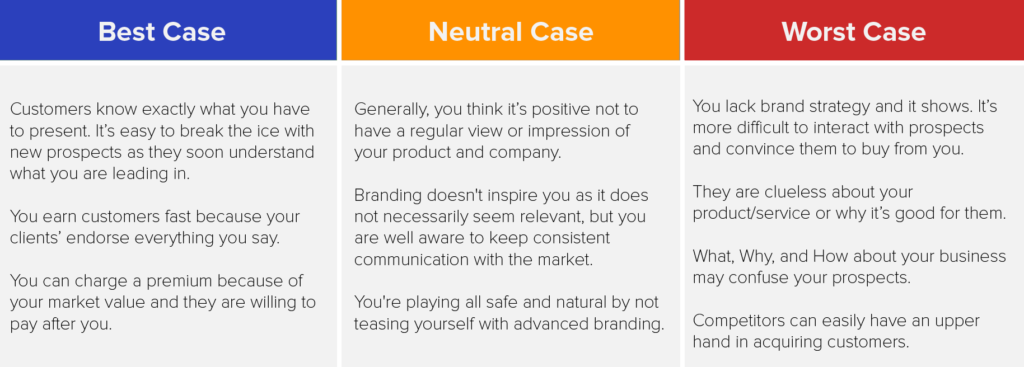
Steps to Build a Brand Strategy
To serve you rein in what many marketers think more of an art than less of a science. We are about to place a mirror in front of you to know and integrate the branding strategies into your business in 6 simple steps.

1. Who Are You? What You Stand for?
At your core, your brand needs to reflect who you are. We suggest you some amazing things to inject into your branding strategies like put your own personality into your brand. Insert your own desires, wishes & dreams.
A brand is just a reflection of you, so by really focusing on who you are and what you want to accomplish as a person is a great way to build a brand that has a long-lasting impression and truly drives customers through your doors.
Paying attention to what you stand for, what you mean, and what you wish a brand could be is extremely important. So keep that in mind!
2. Know Your Audience & Competition
To set off the mesmerizing impact of your brand onto the audience, understand the taste, desires, needs & preferences of them.
You have to be clear-cut in your approaches to the market like which age group you should aim for or what will be the preferred audience of your product or service. Make sure your brand reflects what customers are looking for.
You should also stick out to your competitors, keep an eye on the rights and wrongs. How can they update or shift their momentum to grab the customers?
Think like customers first to feel for them. You can avoid pitfalls by looking into your customer’s histories which otherwise you might fall into.

3. Define Your Voice
How do you want to arouse feelings through your brand’s voice? What should that voice look like? Are you looking for different channels? such as social, digital, or print channels. What will you exhibit to your customers when you will find them?
Create your brand’s impression by deciding whether you are a humorous, professional, or serious brand? Once you defined what that voice is, you can ensure that your website, logo, color theme all reflect that.
Your message and voice have to be congruent and they have to match each other. Once you recognize your voice medium, make sure your voice will cut through the noise, not just static or people heard all the time and they’ve become numb to it.
By defining your right voice channel, and message, you have the best opportunity to score big when it’s relevant and when people are looking for your brand.
4. Invest in Your Brand
We are not just talking about financially, but that surely is a large part of it. If you are a luxury brand, then you should have a luxury experience. You don’t need to cut corners on your logo designs, your apparel, website, or your swag. Your brand and brand assets need to match each other.
Are you a brand that is really built on trust? Well, you need to strive hard to win the trust of the customers & your brand assets should reflect that.
Your website, logos & theme should convey the trust factor and must look professional. So by matching your brand foundation with your brand assets can easily bring value to the customers.
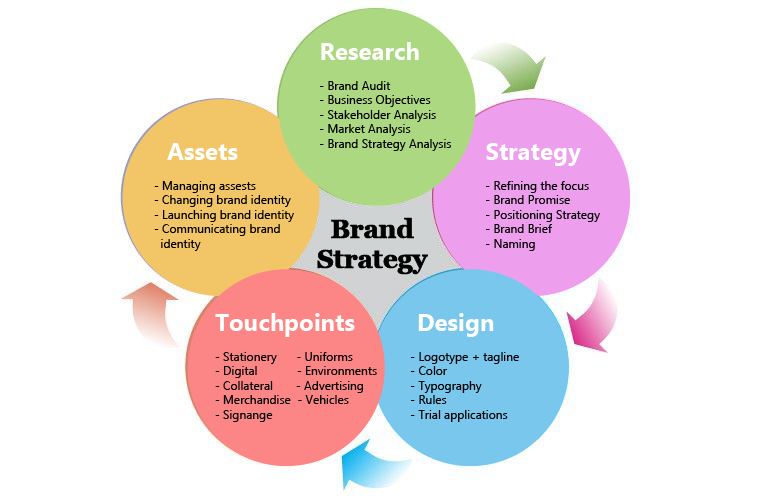
Remember, investing in your brand is one of the core parts because it’s the first thing people recognize you for. They’ll see your logo, your brand message, your office, so make sure you’re investing in high-quality.
So, if you miss this step you’re going to be paying for it down the road.
5. Think Big Act Local
You don’t need to be a service-based industry or a local business to act like a local. This can be e-commerce; global agencies or businesses don’t matter. Think big but act locally. Get involved in local festivals, support local non-profits groups, or sponsor some local sports team in your community.
There is obviously a balance between spending a lot and getting a tiny logo for your brand or actually investing in a local community. All you do is to be involved in the happenings of the local community and it will adopt you as one of your own.
If you’re already in the scene and people may know you or your brand, but if you’re just getting started, then this is going to be a lot more important. If you want to pull off a magical spell for your brand, then you should invest in the local community and it will pay dividends for you.

6. Be Your Brand
Bonus Tip: Your brand doesn’t start with a website, logos, flyers, ads, digital media, or anything like that. But the core message of your brand should be you.
You’re your biggest brand advocate. You know the brand better than anybody else, and you lead the charge defining what that brand is going to look like for your business, for your employees, and your customers.
Make sure you live your brand. If your brand is built on trust, then you should be a trustworthy individual. Pay attention, if you cannot live the lifestyle of the brand that you’re trying to focus on, grow & mature, then you need to refocus on what your brand is really is.
Ensure your brand reflects you and you reflect your brand is a great way to make sure that your message gets across and is lived from the top-down.
Download Now: Free Brand Building Guide by Hubspot
To Conclude
Your brand at its core, is really what customers say about you when you’re not in the room!
The key takeaways about brand strategy in 2021 are:
- Make a natural outlook of your brand and let customers get what they’re looking for.
- You need to study and understand your customer.
- Adopt new ideas, core tenets, and new ways in the business.
- Create an identity of your brand, and smartly unveil your brand’s story.
- Start building your marketing strategies from the first two things before creating a brand value.
It’s that easy and that complex. Focus on each of the steps and you will have a much more successful marketing strategy.
Opinions expressed in this article are the thorough research of our blogging experts. Stay tuned for more informative content about marketing.


